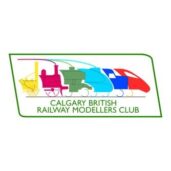
This page is a running update of our new exhibition layout construction.
Please start at the bottom of the page for a logical progression.
For now the goals are: Tidying up a few track and wiring niggles in time for Supertrain. Work continues on the point control microprocessors and all of the button & LED wiring.
Weekend of March 22/23, 2025 We were able to assemble the layout for the first time. IT WORKED! There were a few glitches to iron out but both DC and DCC worked just fine. We now have a rough looking but operating layout ready for Supertrain. There were lots of ‘high-fiving’ and self congratulations.
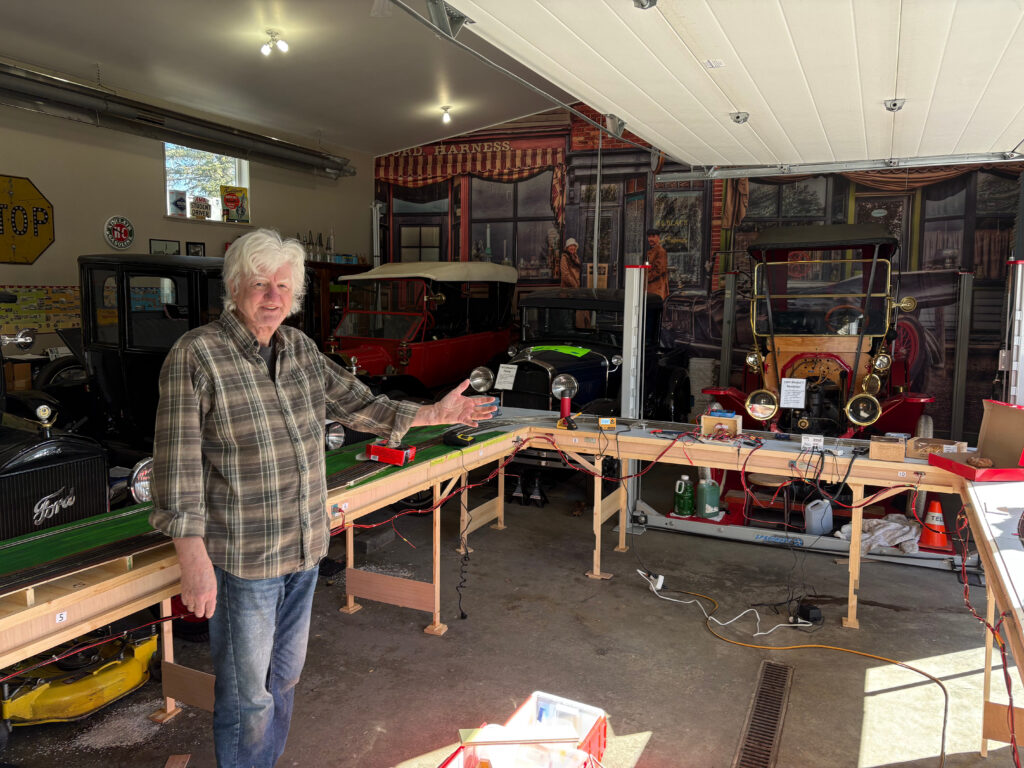
The wiring all works
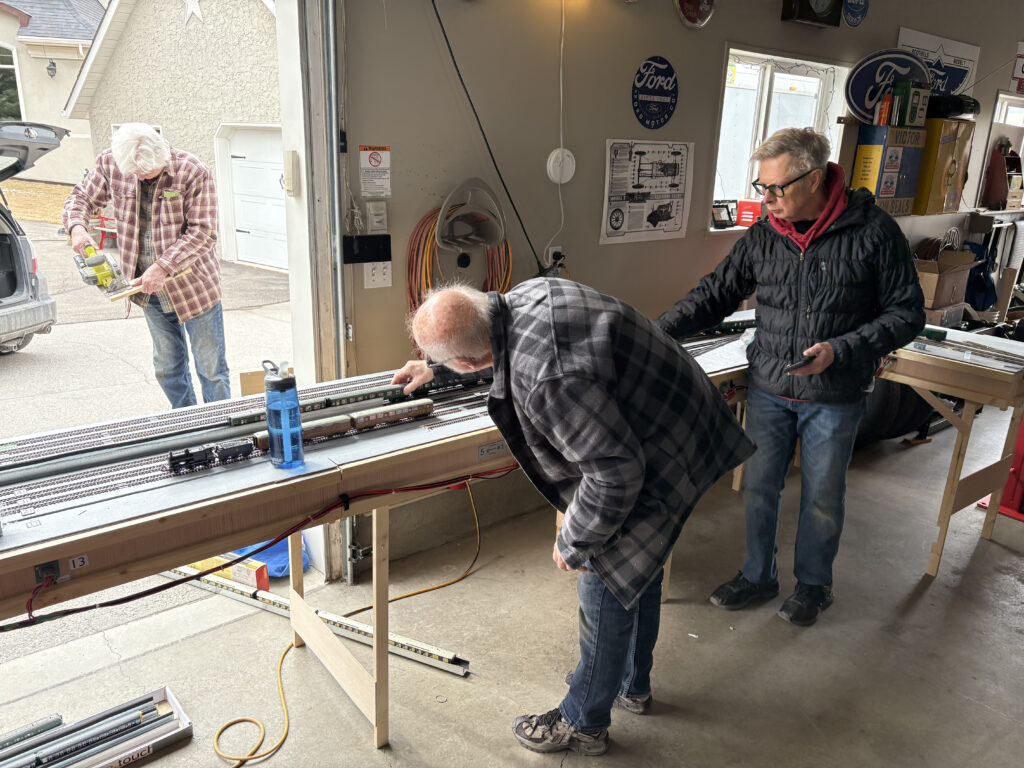
Can we run 4 4-car Multiple units at once?
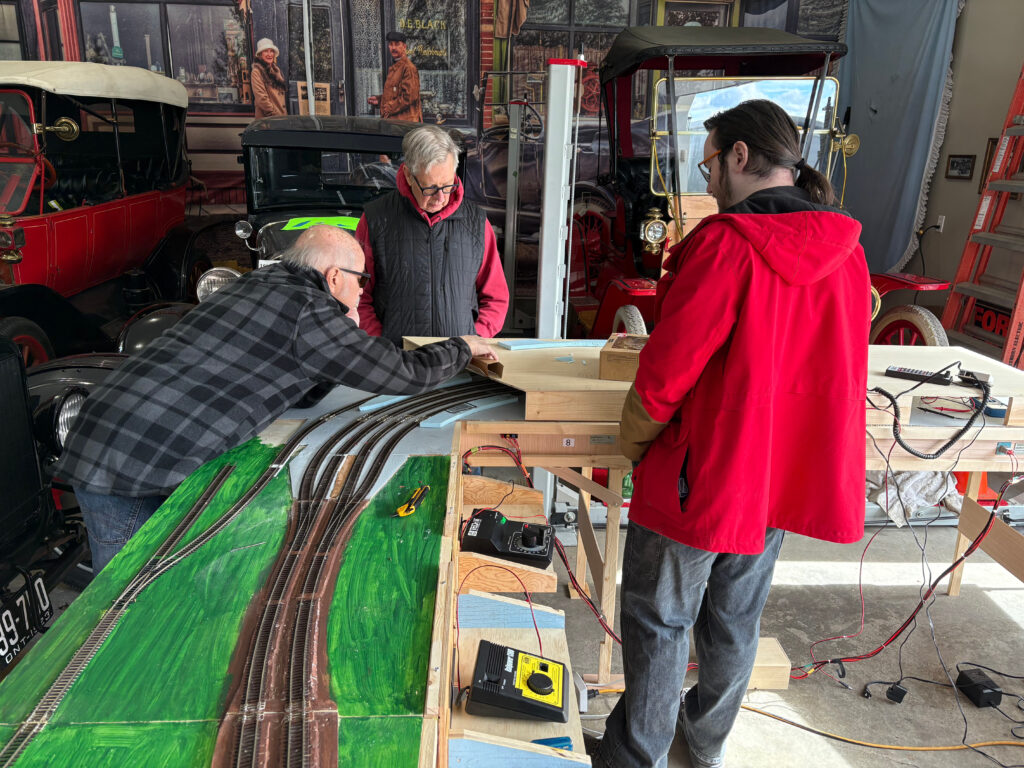
The station buildings will fit nicely here
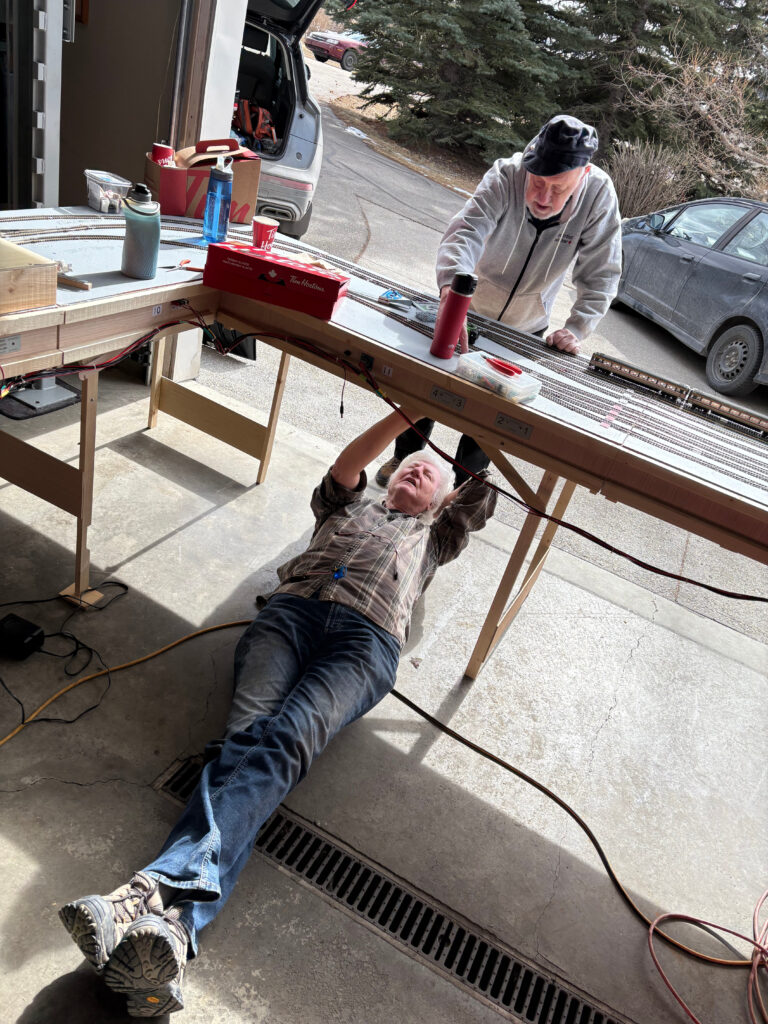
Adjusting servos under the board.
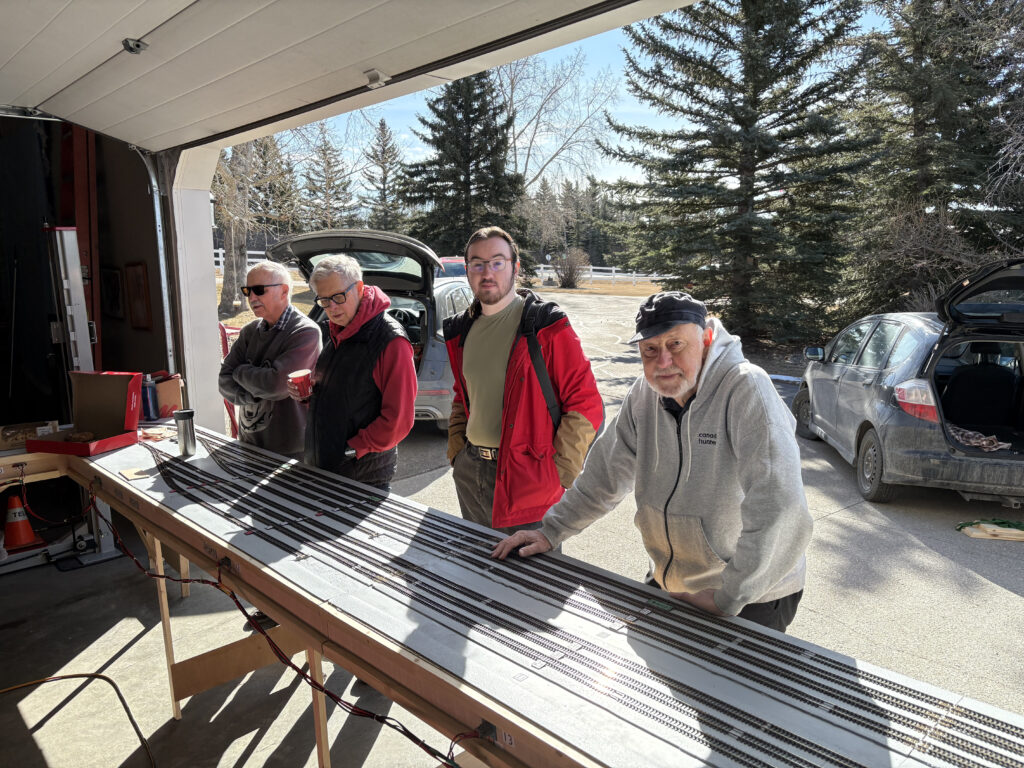
Some of the happy building/testing crew.
Mid February 2025 The Bridge sections is finally built and track layed, connecting the Canal section to the Fiddle-yard. The second ‘snake’ delivering track power to the back (non-scenic) half of the layout has been started.
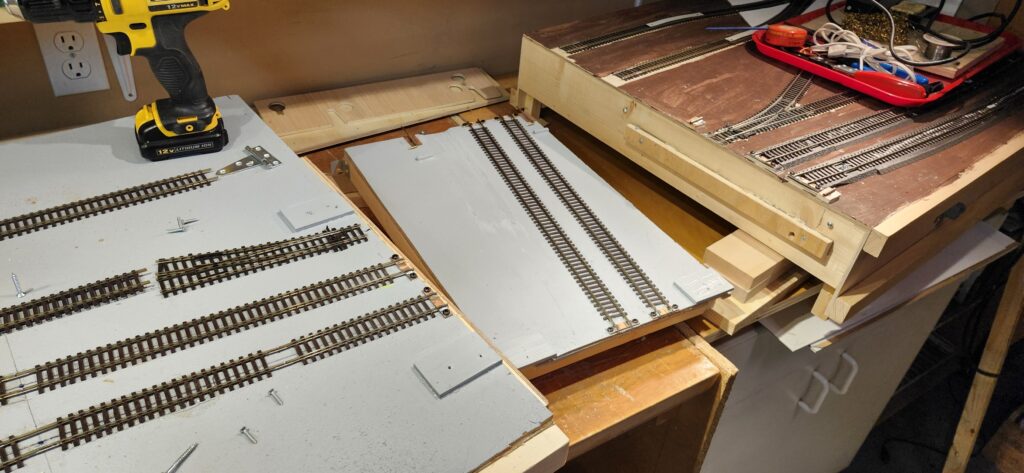
The access lift-bridge getting built and track added.
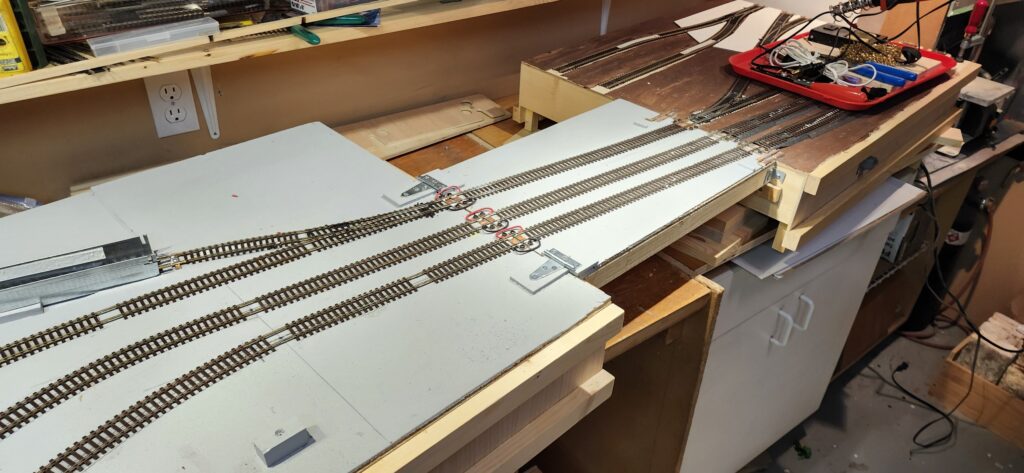
The access lift-bridge in place, track down, tested
Mid February 2025 Switch control has started. Push buttons on the Mimic panel are connected via a Button Shift Register board to the Control ESP32. It connects via WiFi to the Node ESP32 under the layout that connects to all of the servos through a PCA9685 distribution board under the layout. The Control ESP32 is also connected to a LED Shift Register board the distributes signals to the LEDs on the mimic panel. Writing the code for the ESP32s is underway.

A block diagram of how the switch controls work.
The circuit diagrams for the 2 different Shift Register boards have been bread-boarded & tested, then the components added to the board, and connections soldered. Writing code for the ESP32s is underway.
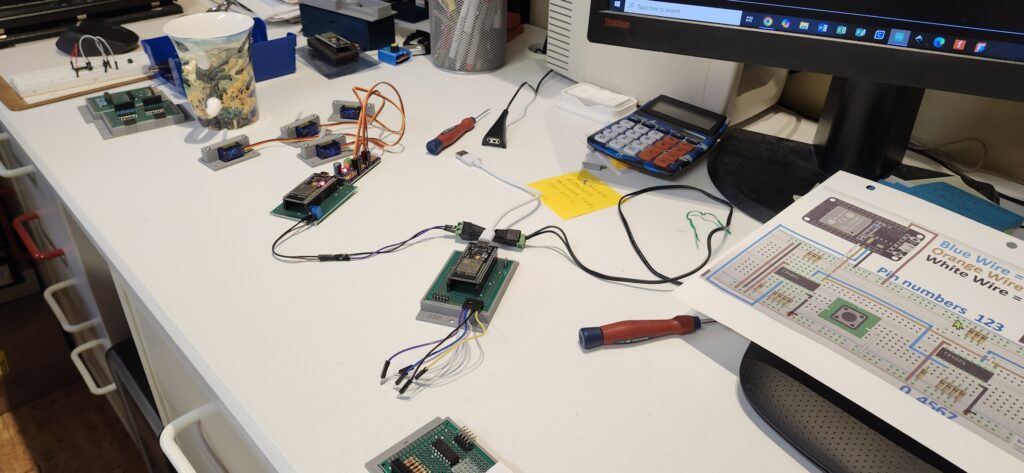
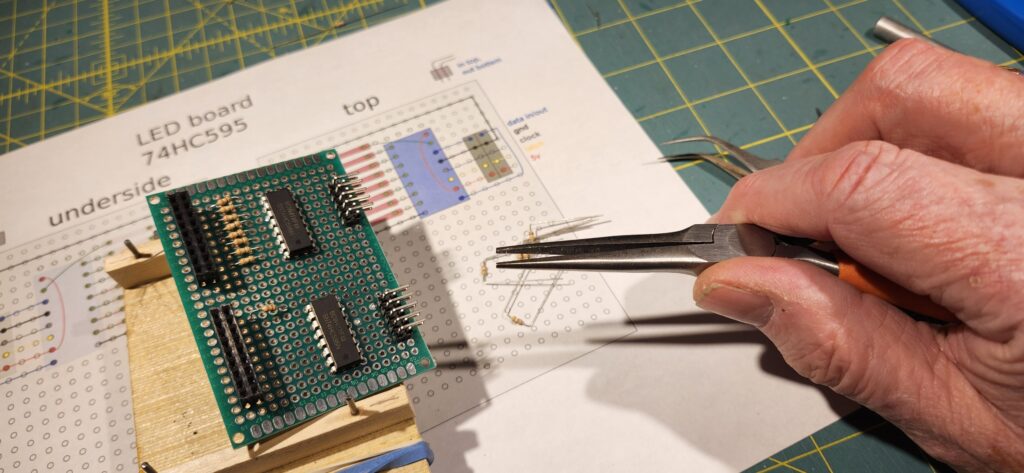
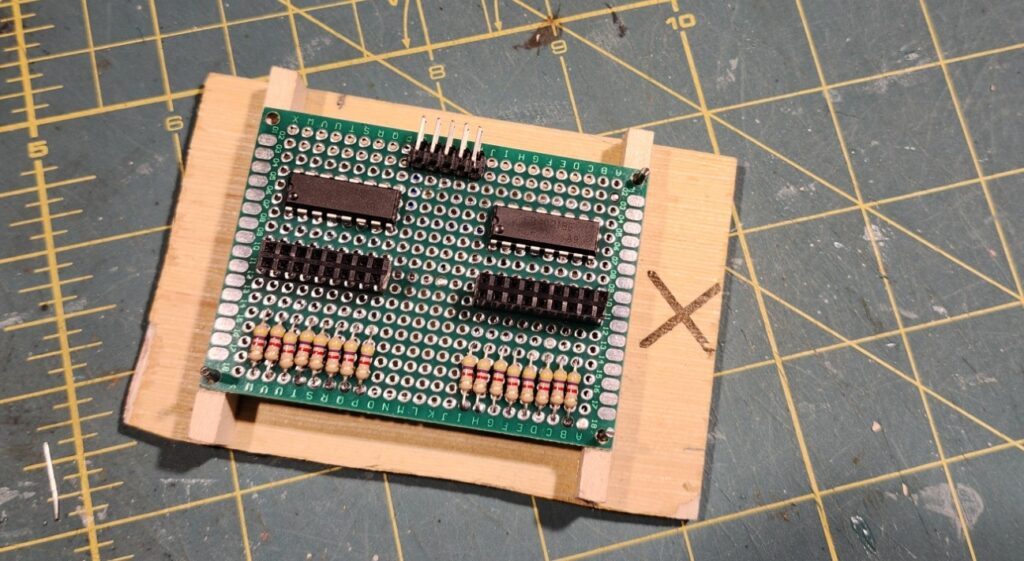
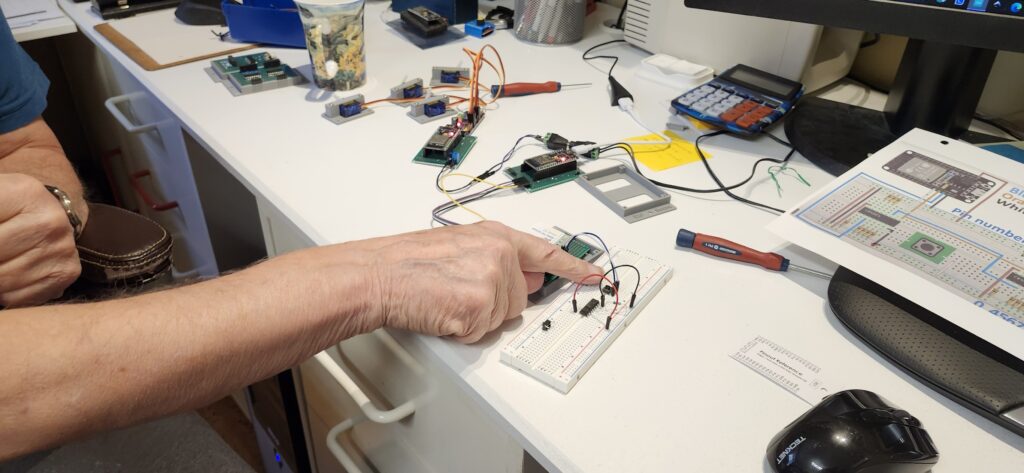
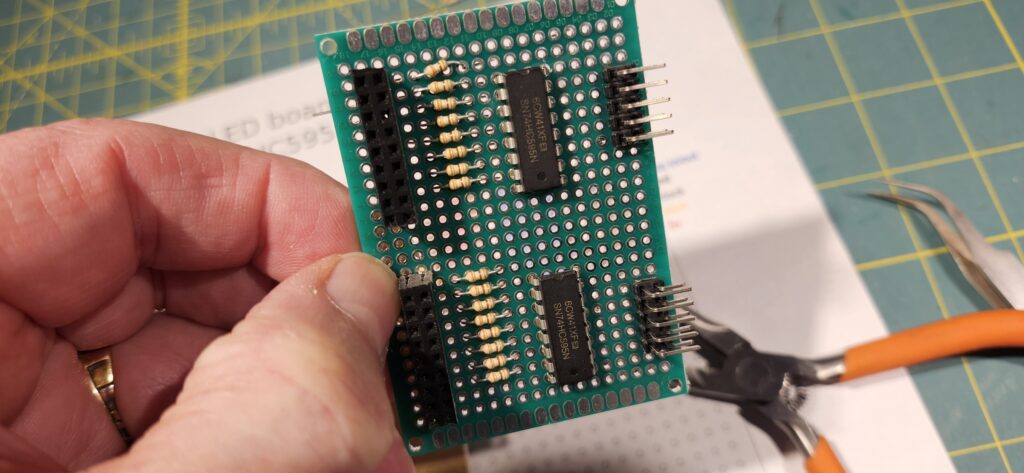
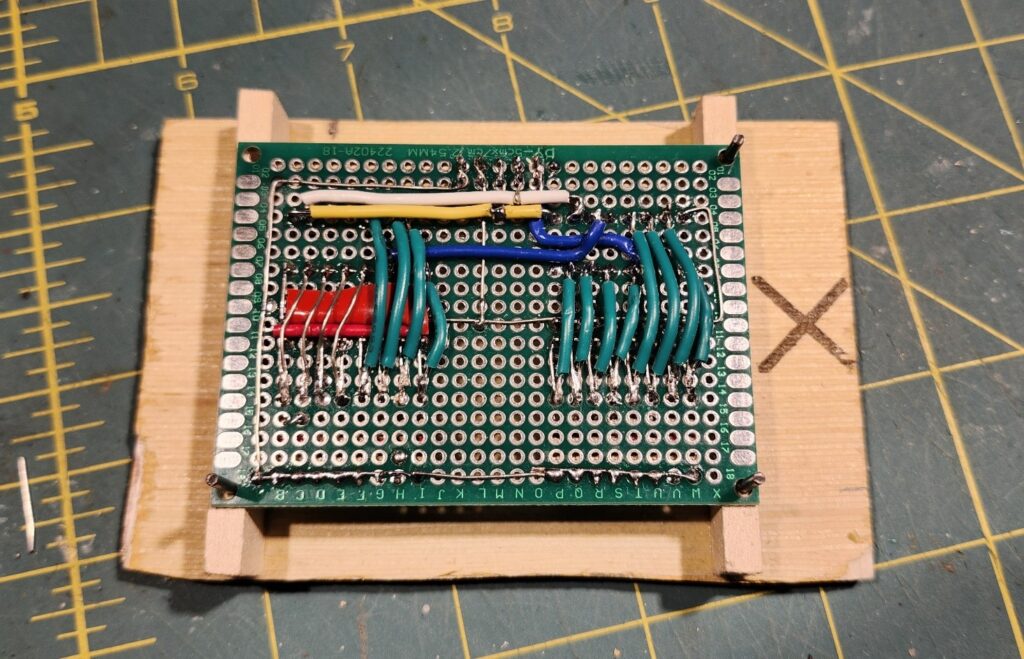
Wiring up the Shift Register boards.
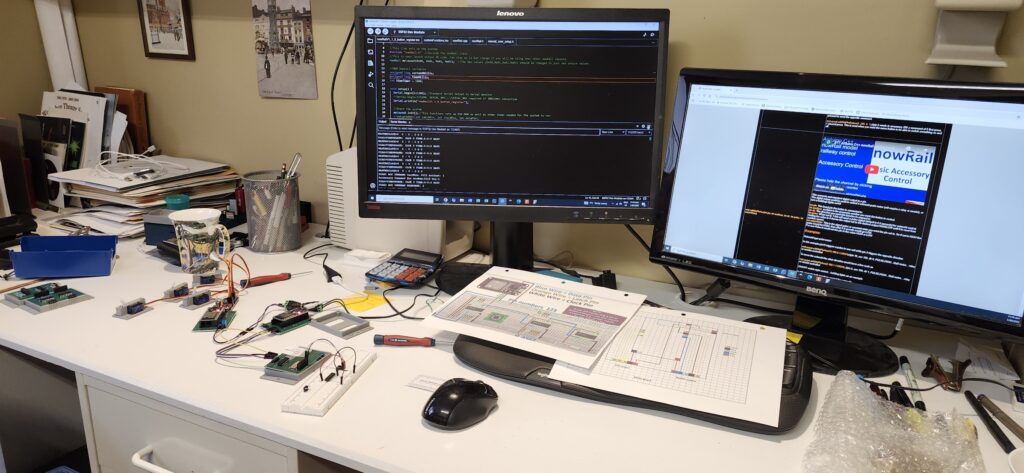
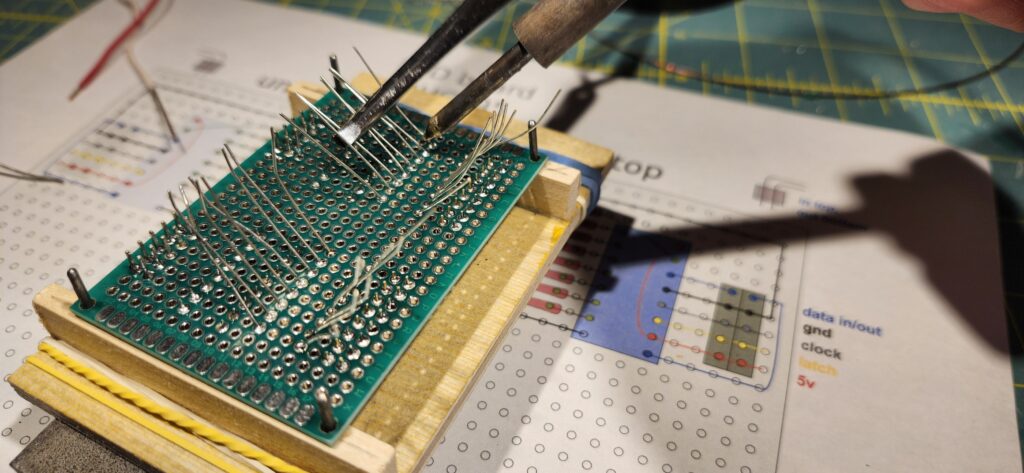
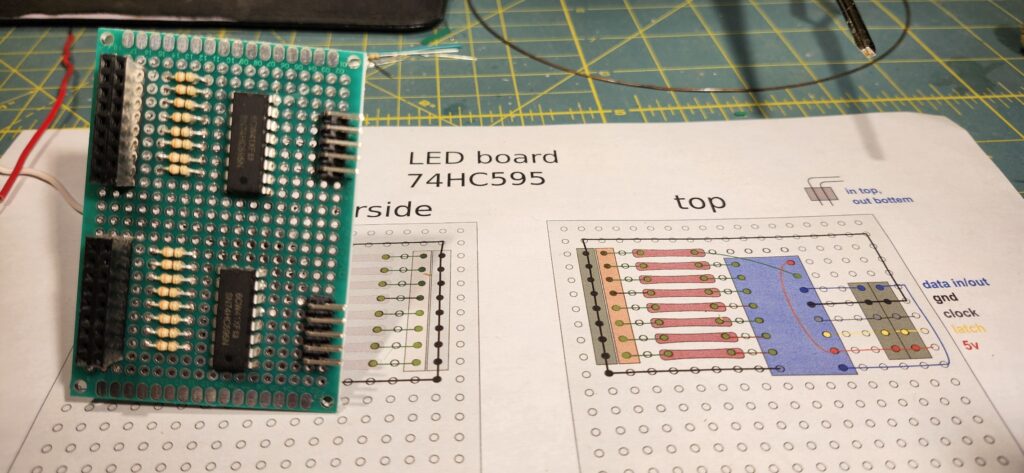
Jan 25, The first loop of track power bus cable (or snake) built. It runs from the ‘Canal’ corner to the centre board on the opposite side. It has plugs for each board spliced in, and the Power Distribution Box built and wired to the other end. A second ‘snake’ will be built and wired to the Distribution Box to service the boards of the fiddle-yard and other non-scenic boards.
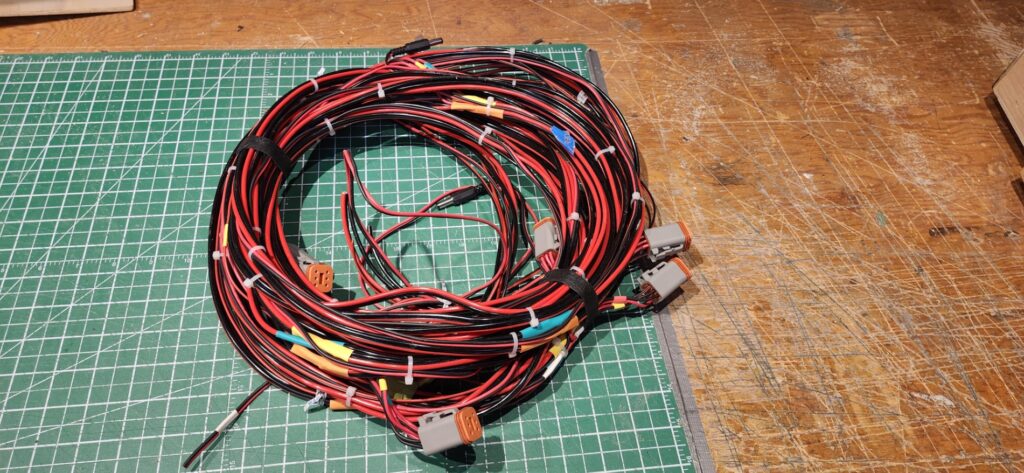
The power bus (snake) for the scenic boards
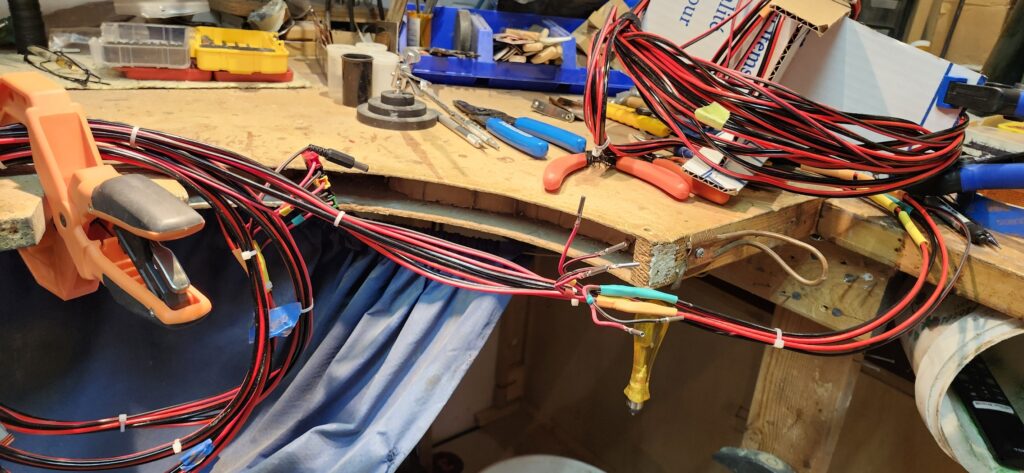
Working on the ‘snake’ is getting messy.
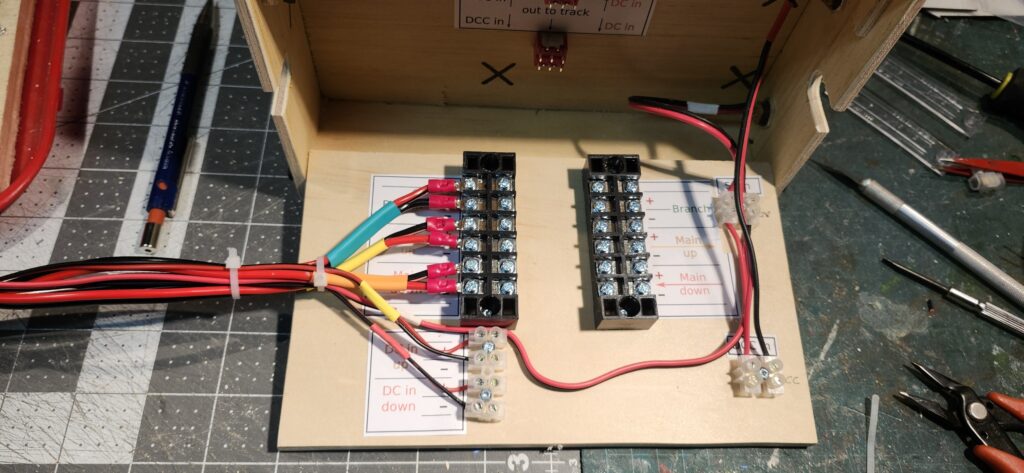
Wiring the ‘snake’ into the Power Distribution Box
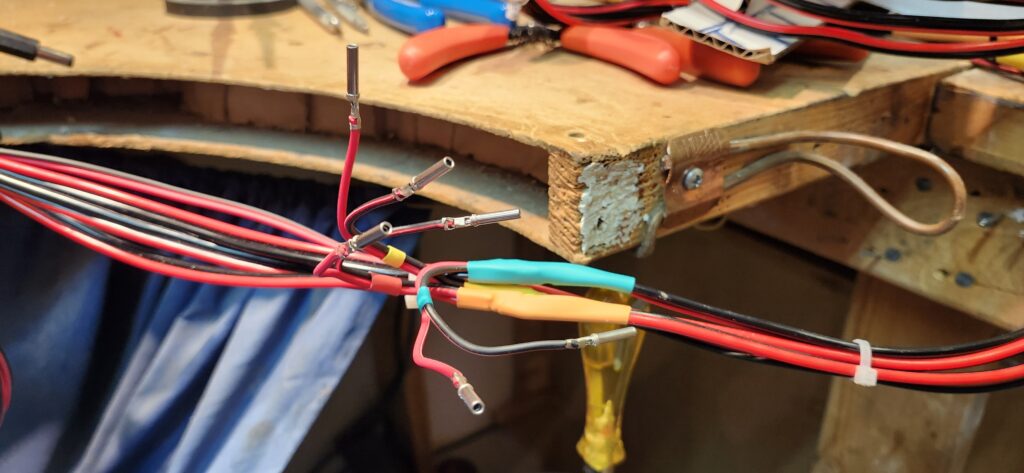
Splicing leads in the ‘snake’ for a board plug
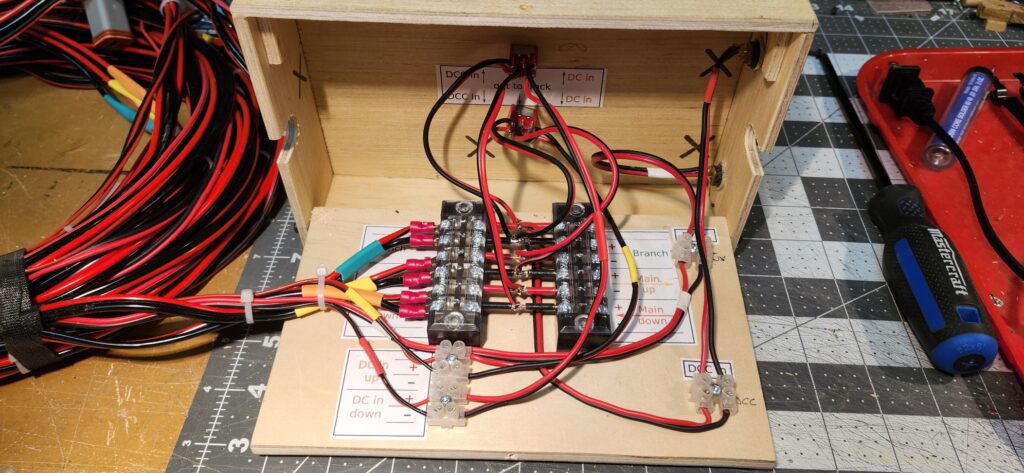
The Power Distribution box is getting messy.
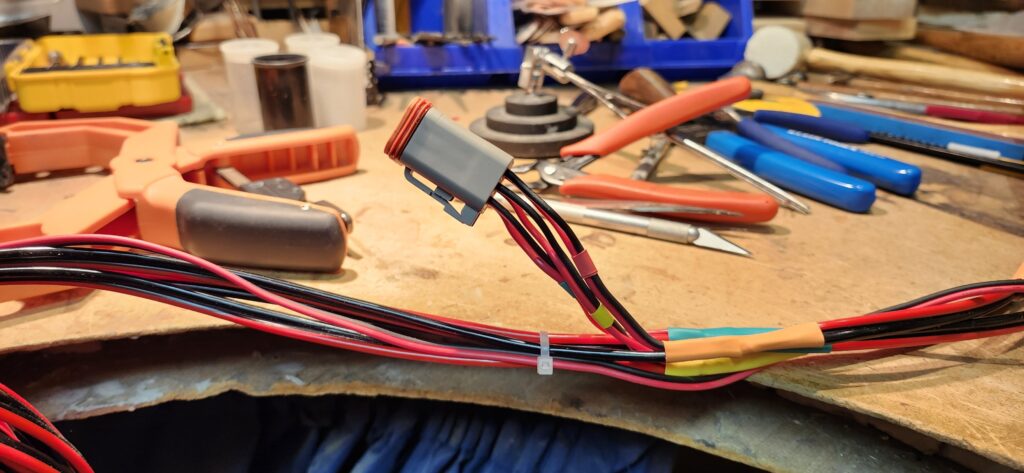
Plug installed
January 7th 2025 All wiring for track power and points installed and tested.
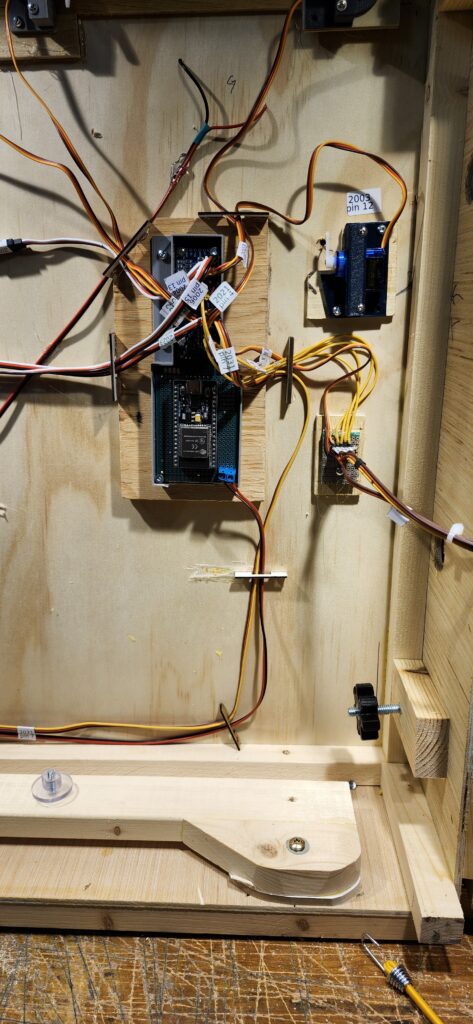
PCA9685 and ESP32 ‘node’ installed
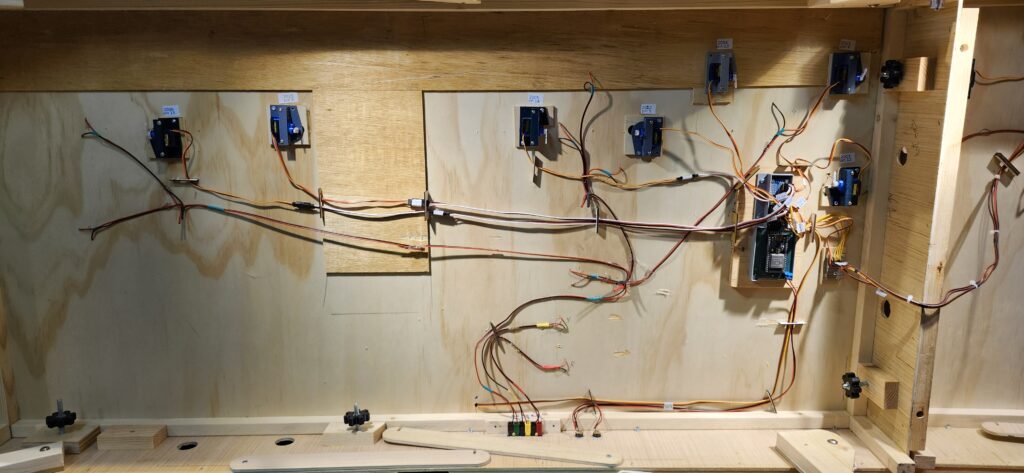
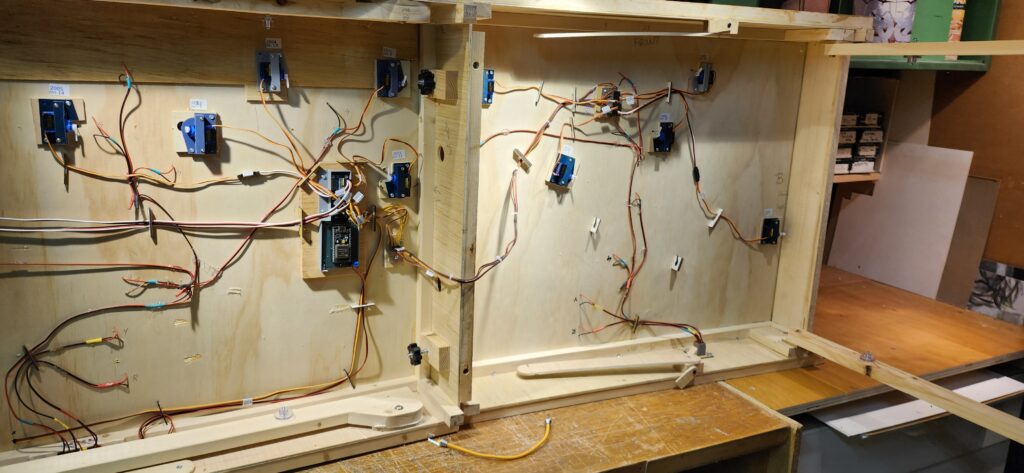
Under the board, track power wiring, servos and their leads, and the ‘node’ all installed in the Canal sections.
By end of 2024 the Canal area (boards1&2) have all servos installed, the node (ESP32 & PCA9685) installed, all connected & functioning.
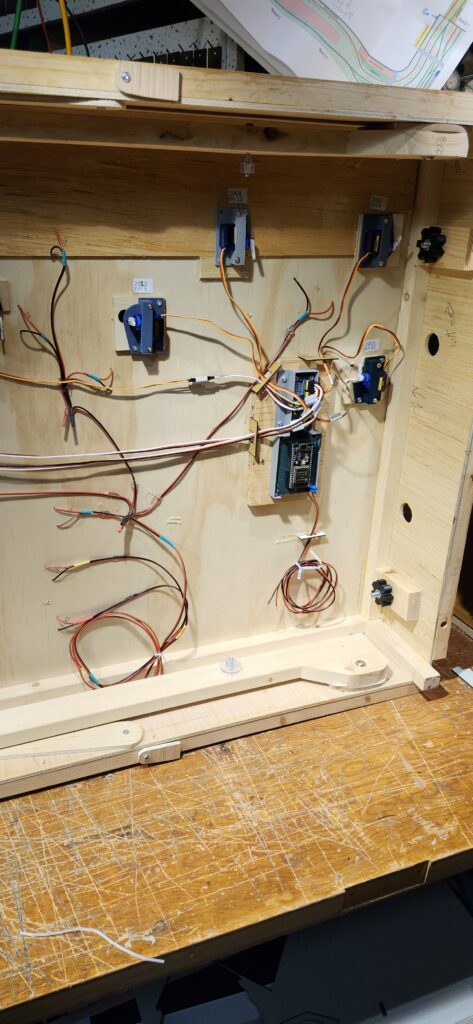
the first ‘node’ installed (ESP32 microprocessor & PCA9685 servo distributor board)
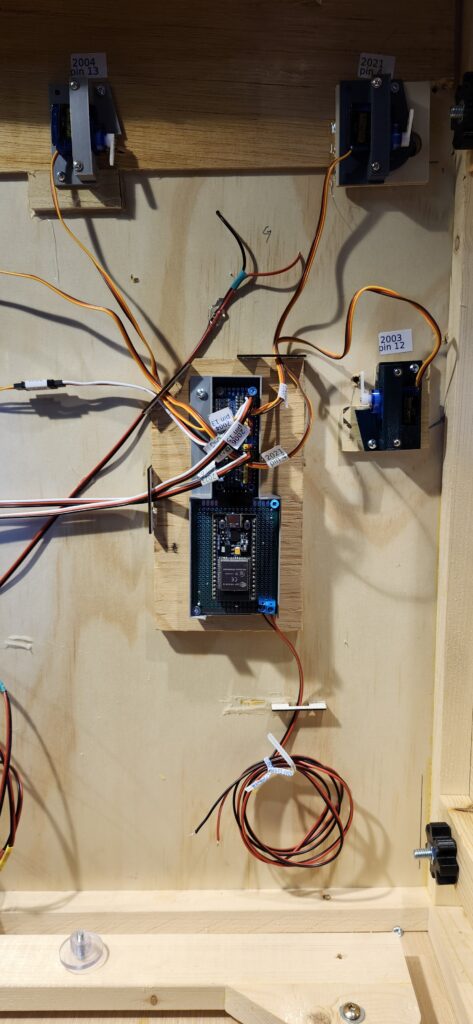
Point and uncoupler servos testing & mounting workshop.
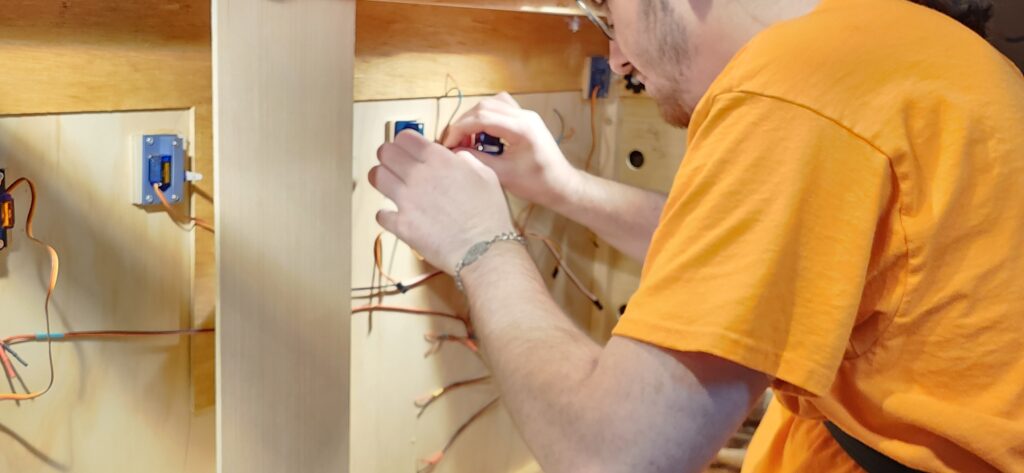
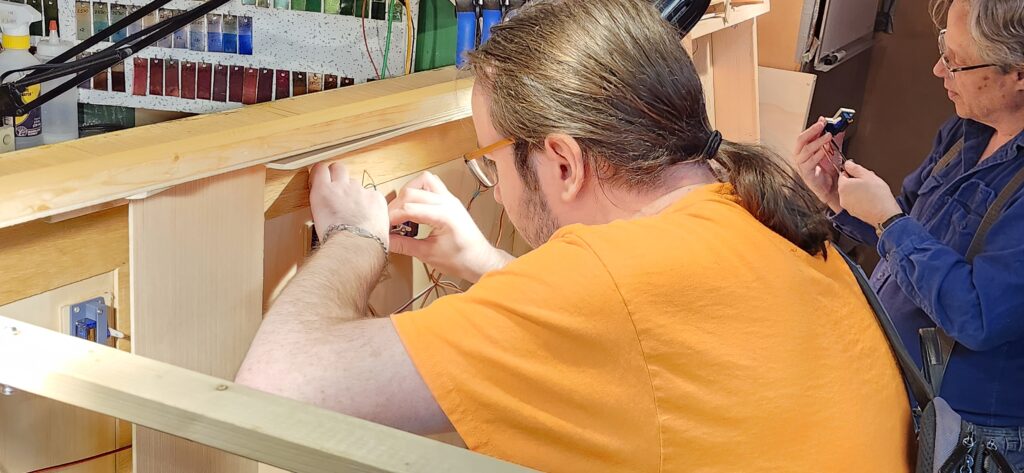
Hard at work installing the servos for changing points( British for turnout or switches)
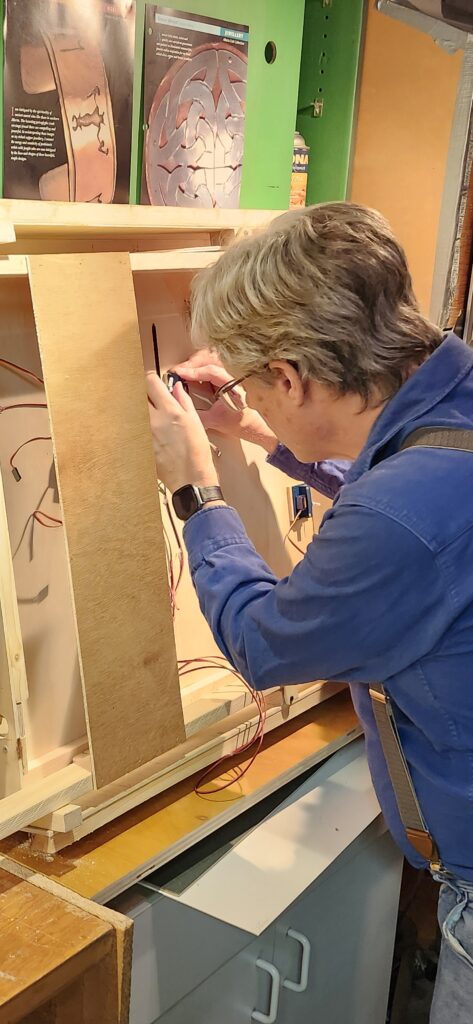
Fiddle-yard boards, cork down and track layout trialed.
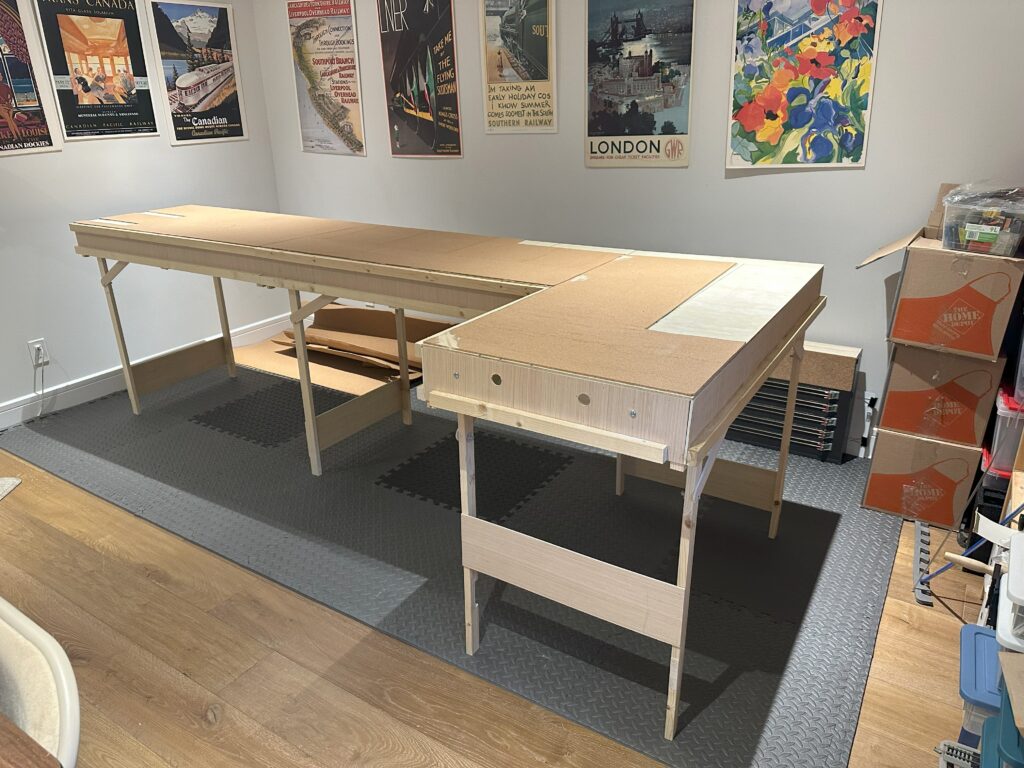
fiddleyard boards getting corked.
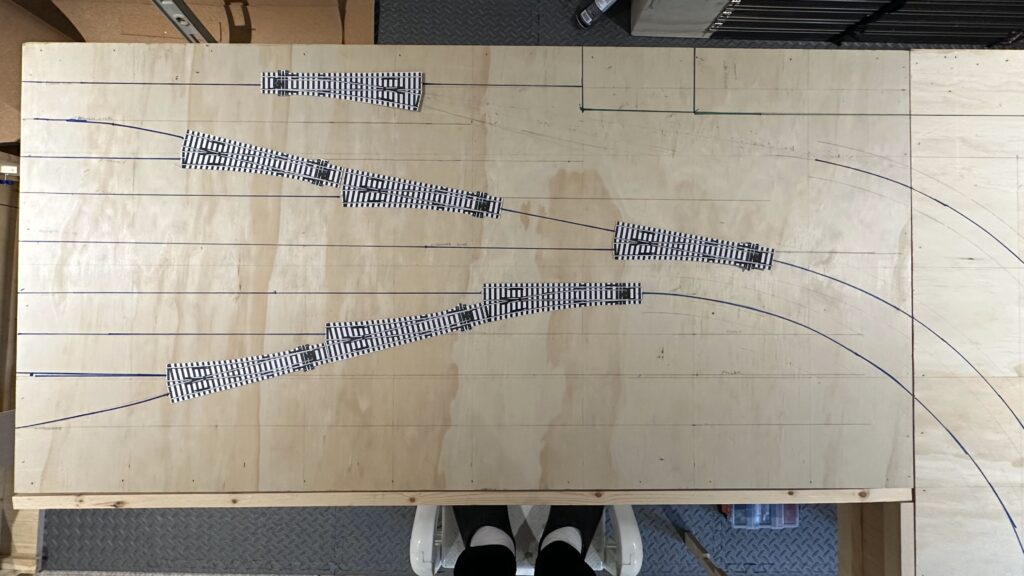
Track plan over-layed on board ready for track laying
Front boards: raising main line, glueing roadbed and laying track. Boards 1,2 &3 connected and tested.
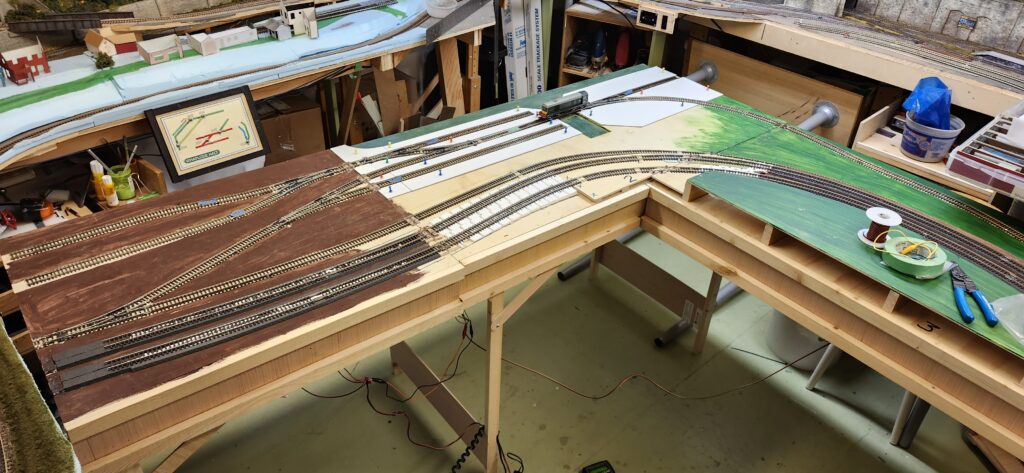
The ‘Canal’ boards finally connected for track and wiring testing.
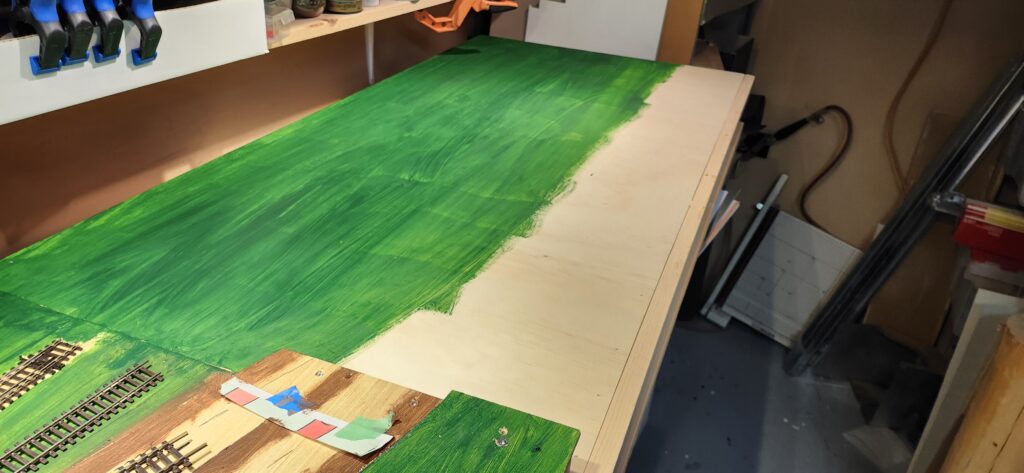
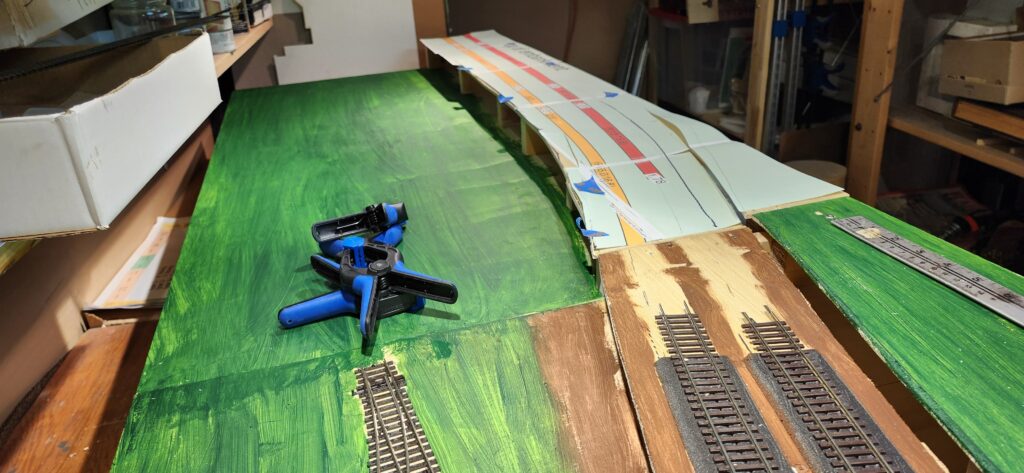
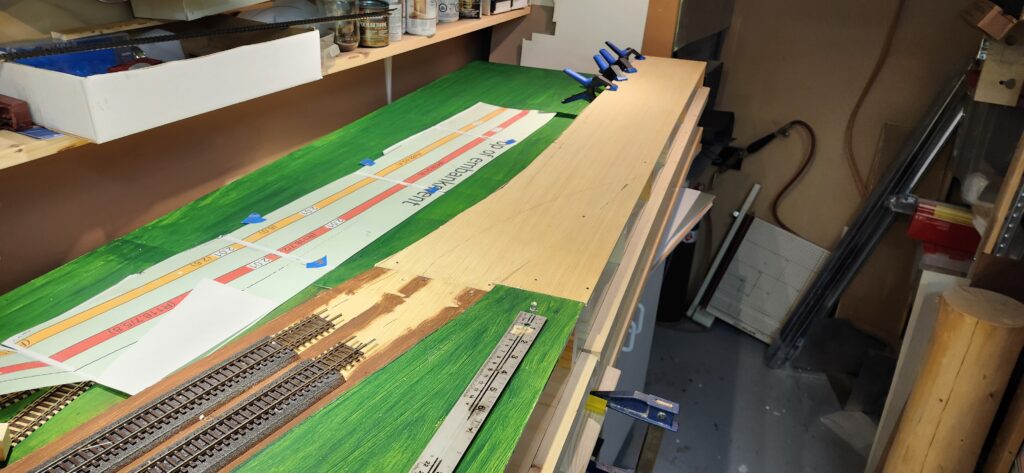
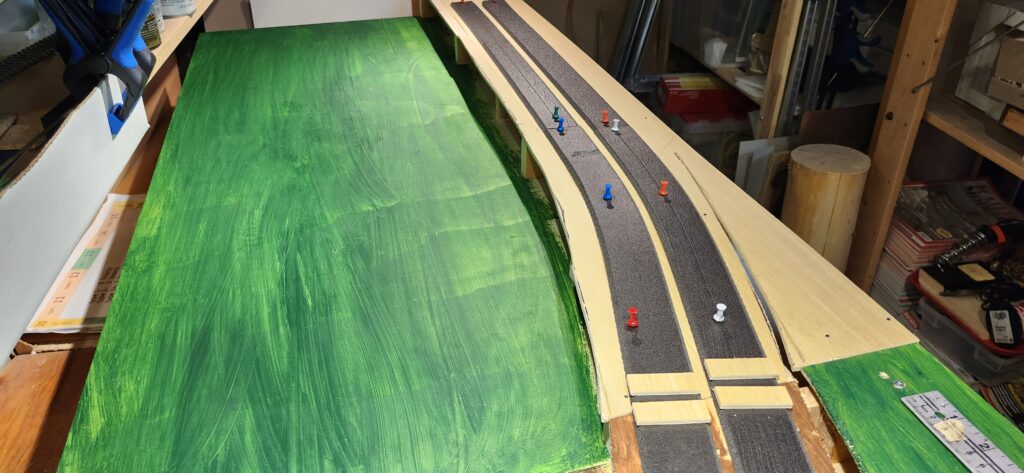
Building the raised Main Line sections and track laying on the scenic boards.
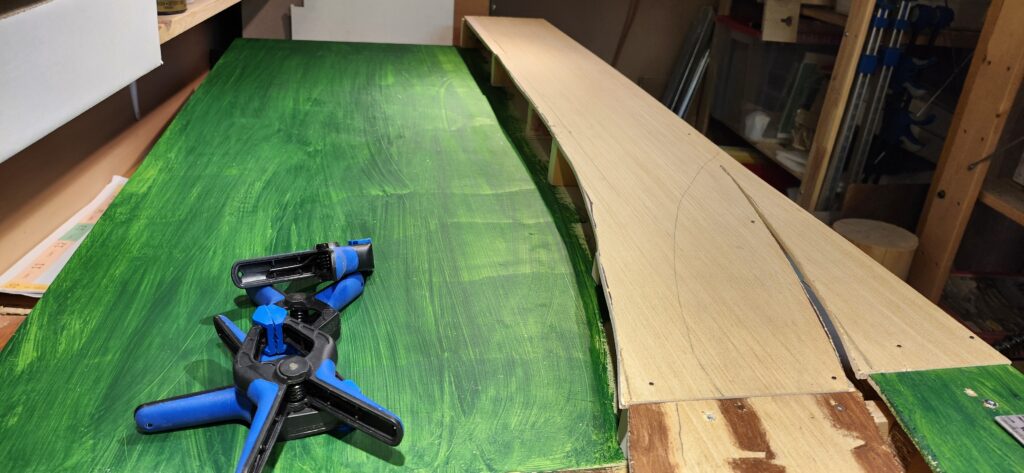
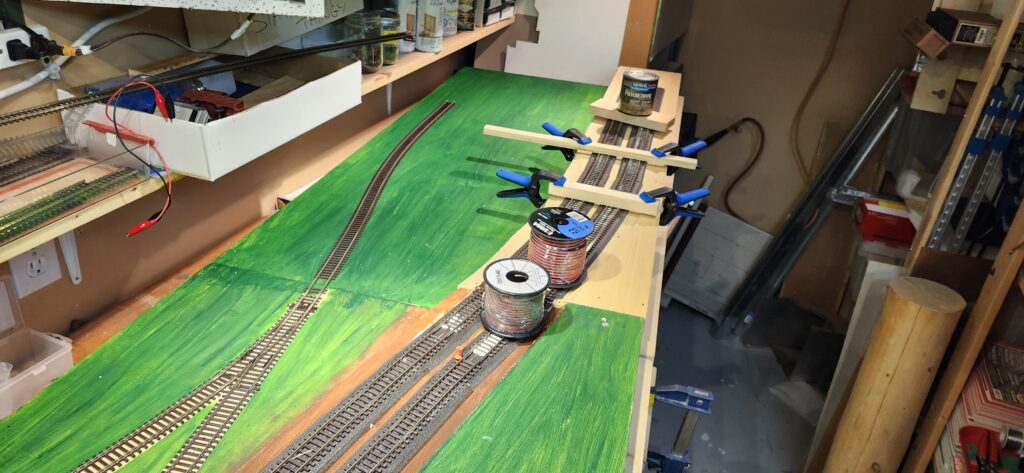
December: Laying cork on the fiddleyard boards, glued down and weighted.
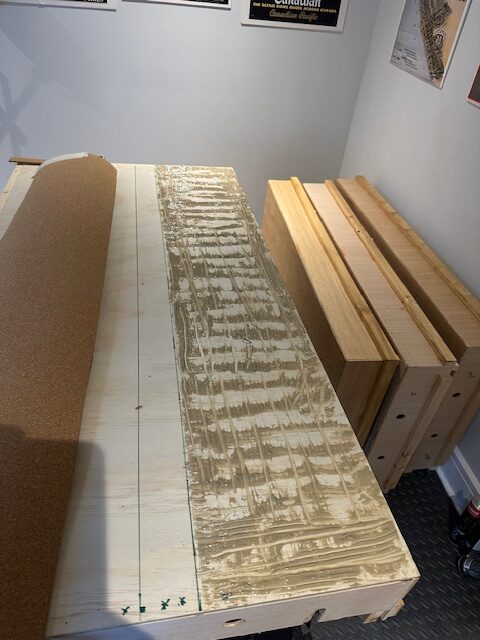
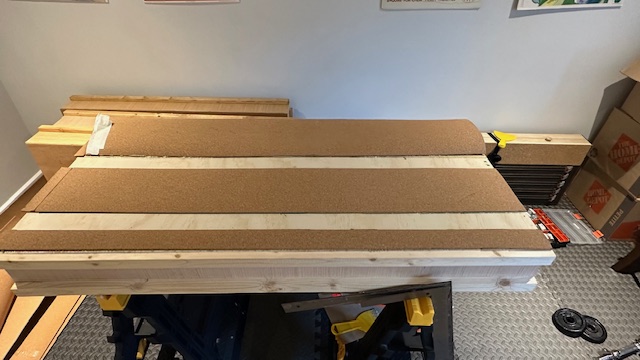
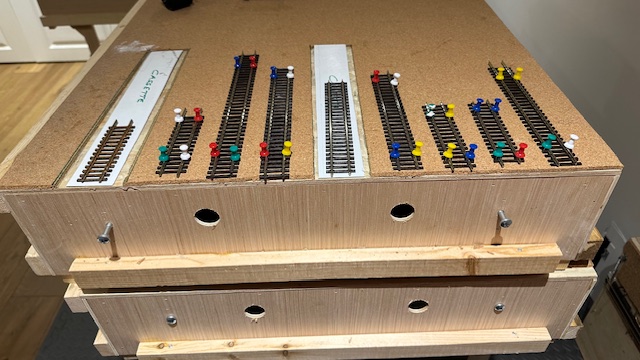
Trail spacing for track and cassettes on the fiddleyard.
November: carpentry work building the raised section for main line track laying track and finally track power droppers while the boards are upright.

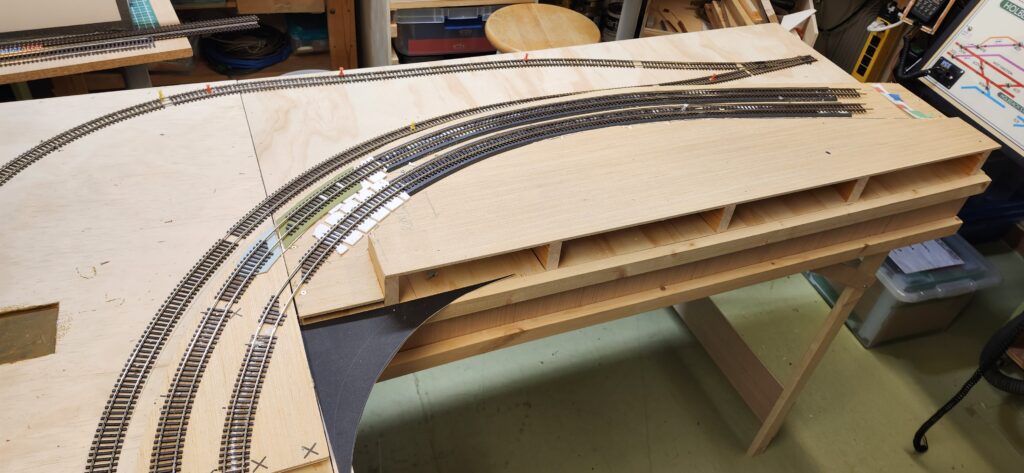
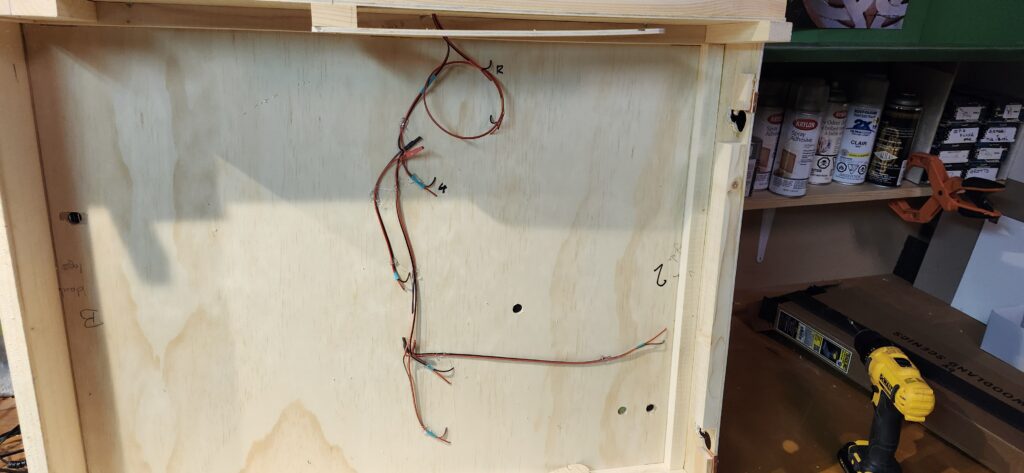
Getting the track down on the ‘Canal’ scenic section, and wiring track power ‘droppers;

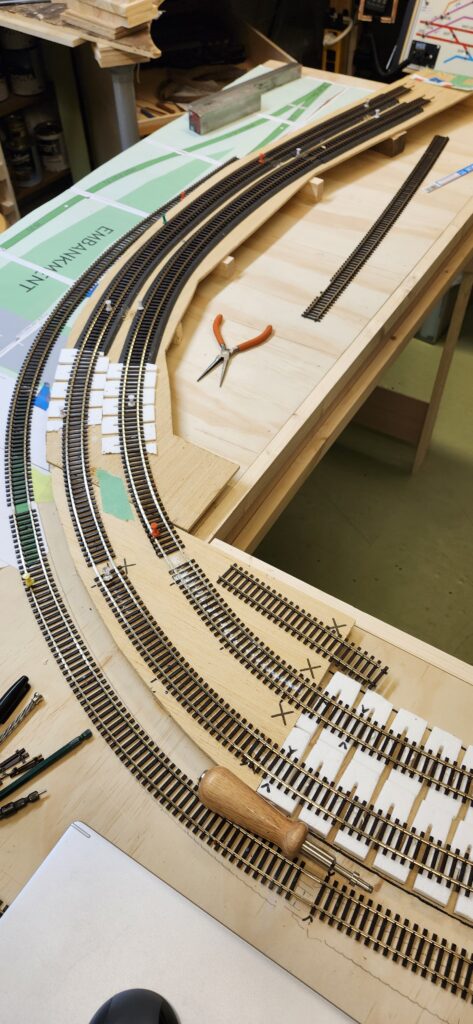
October 24th, Laying track on the Canal boards, and starting the incline for the Main lines.
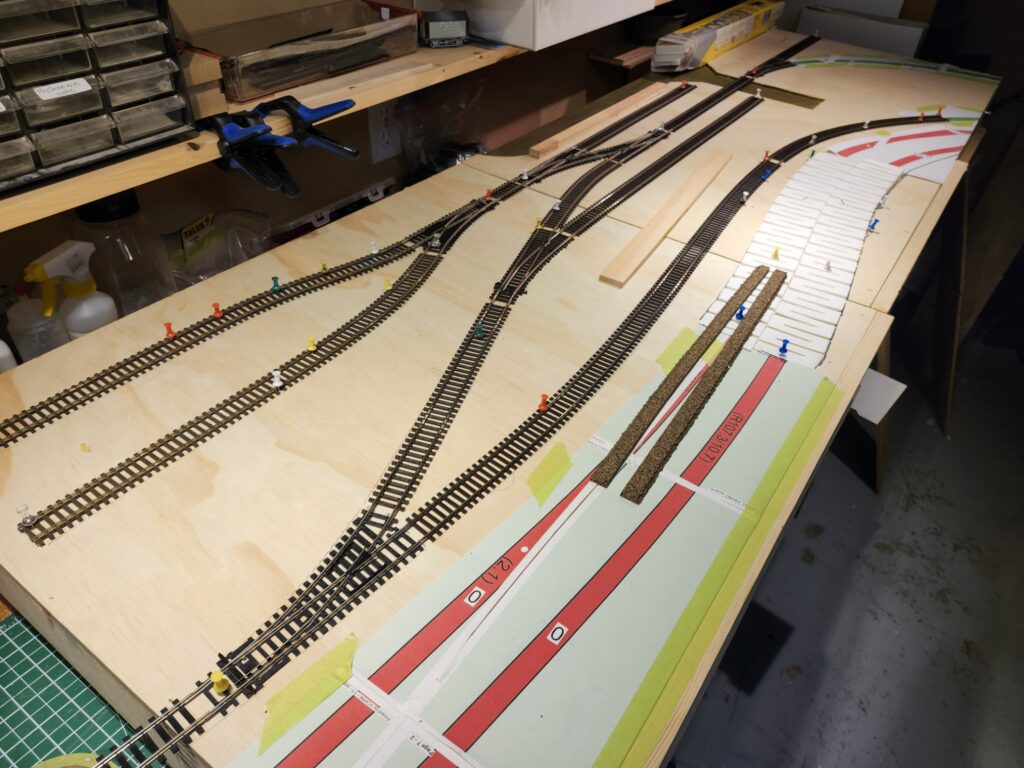
Getting track down on the first boards in the ‘Canal’ section of the layout.
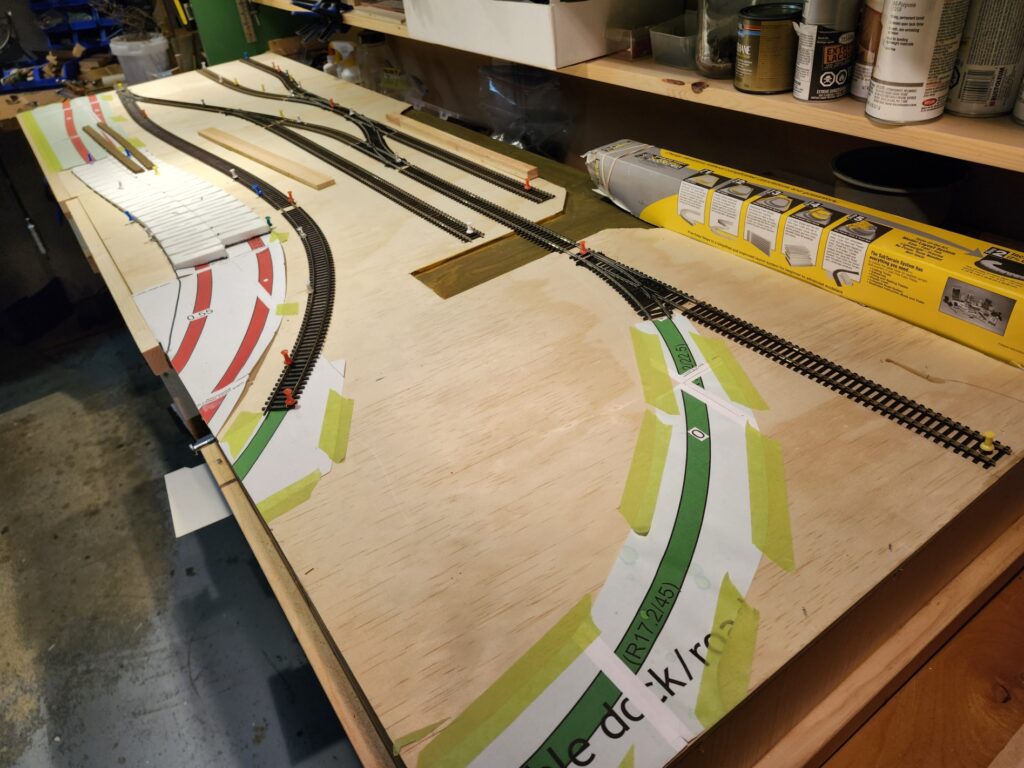
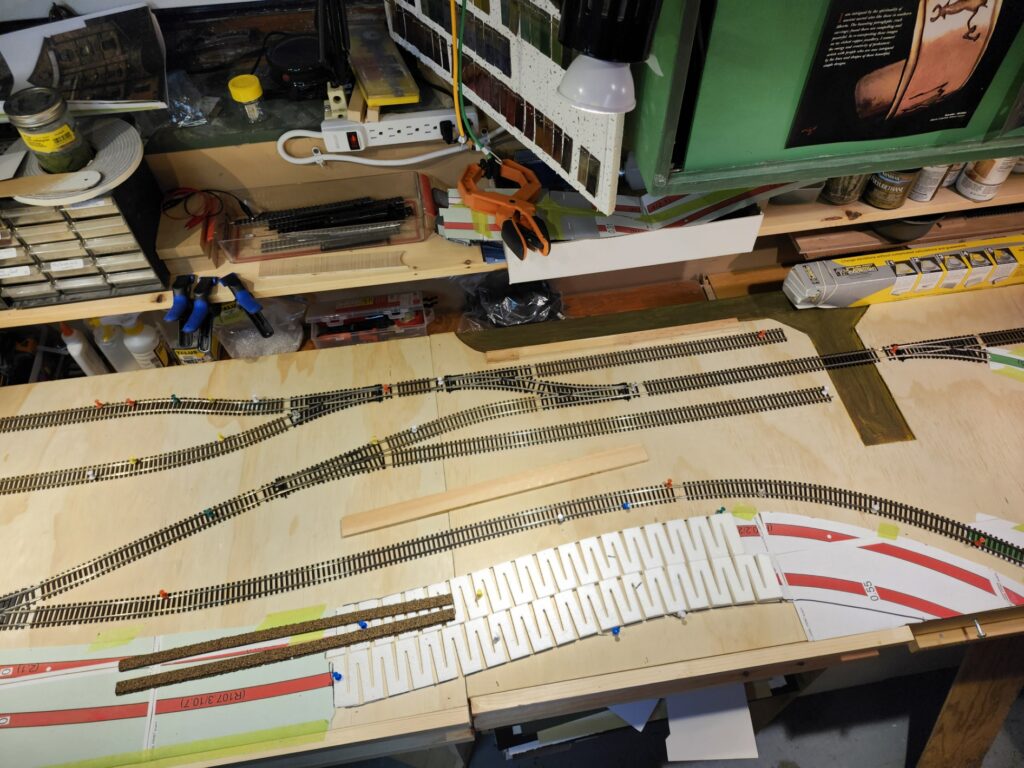
Using foam sections to start the incline of the main lines to have raised tracks on the front boards
September 6th, Heritage Park’s Railway Days, demonstrating SCARM track program and trial track laying.
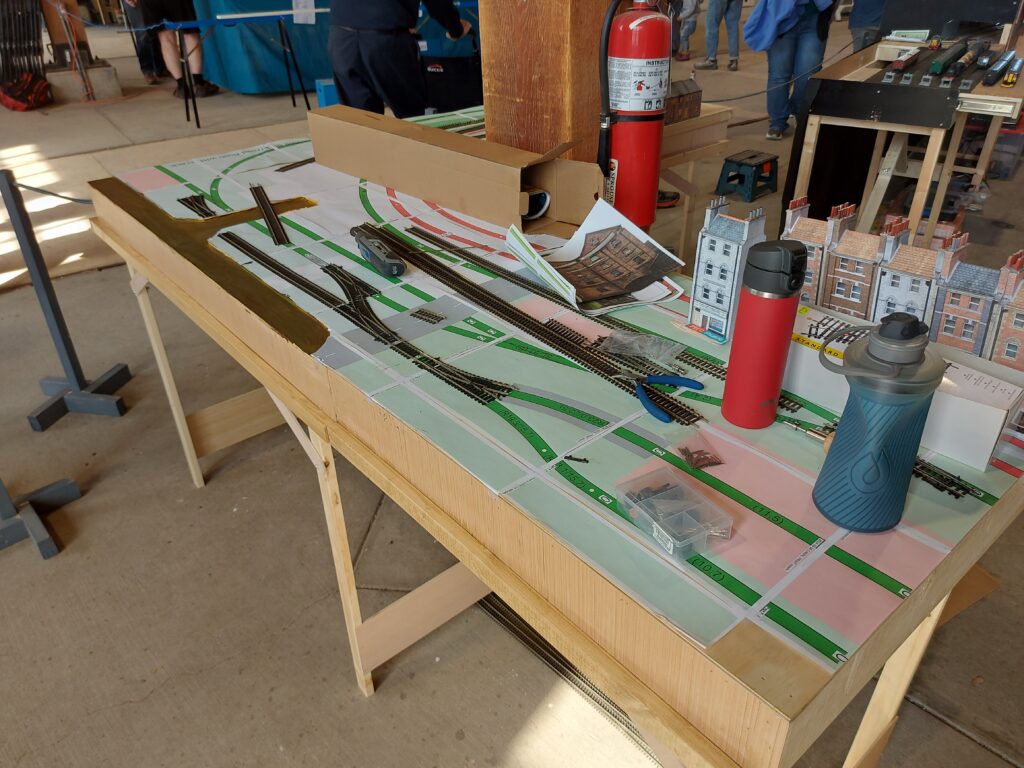
Track laying on SCARM track plans at Heritage Park’s “”Railway Days”
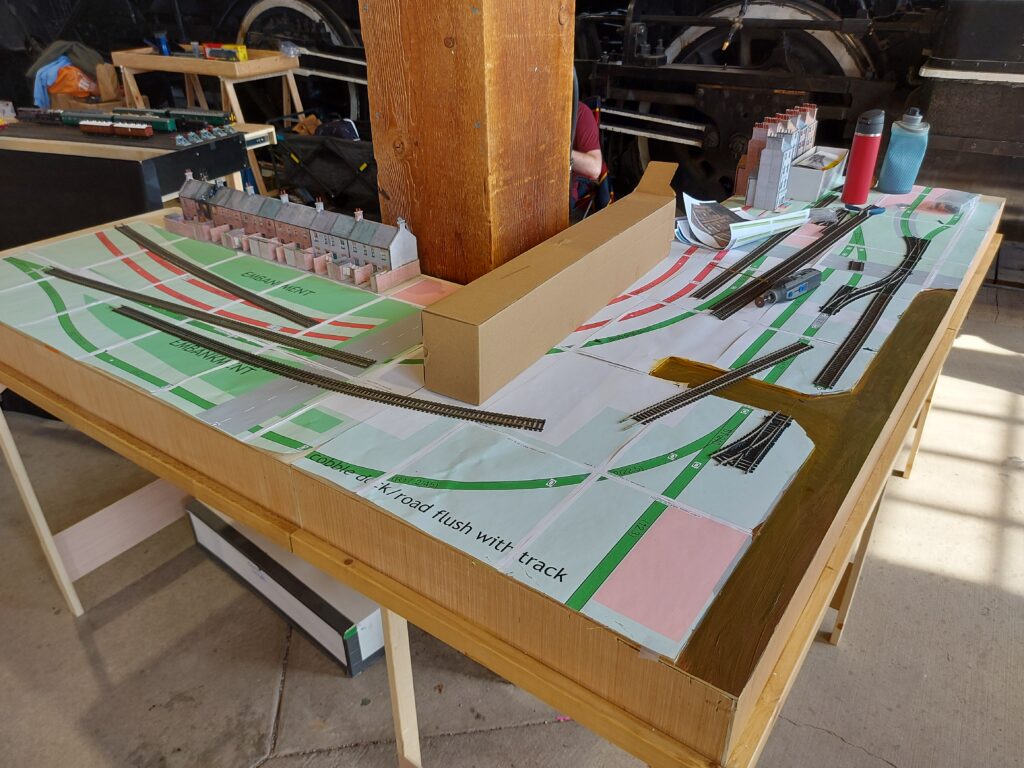
September 1st: Track ordered!! Great Day.
July 31st update: all 16 boards have been built, & with a few hiccups all fit together well.
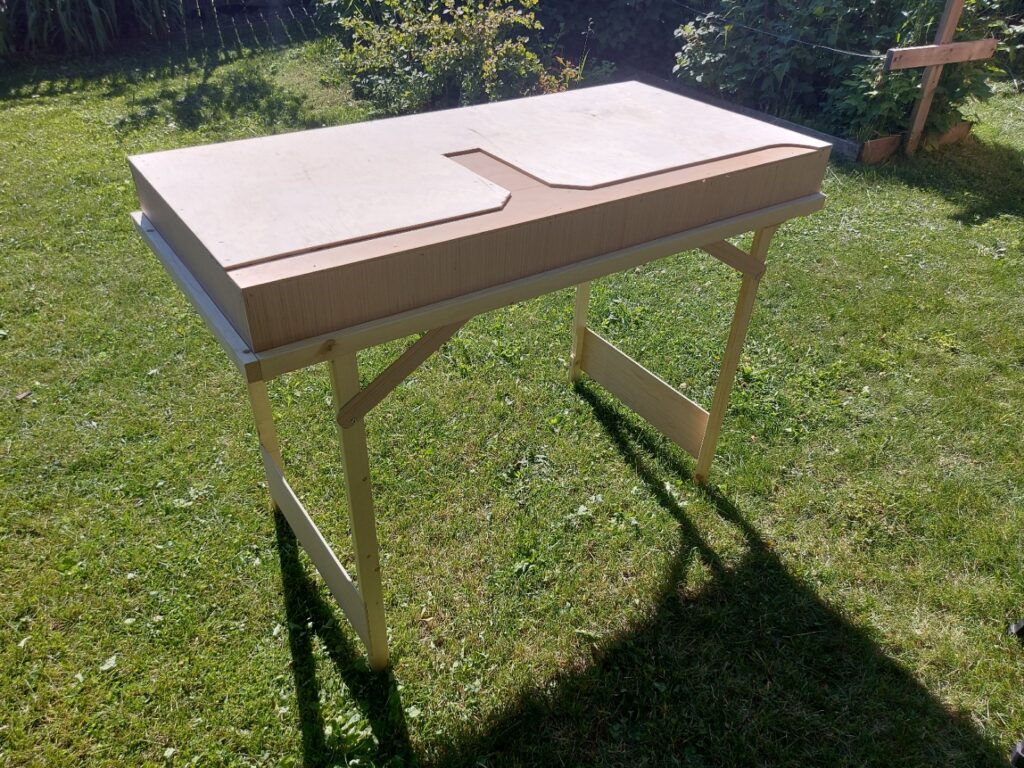
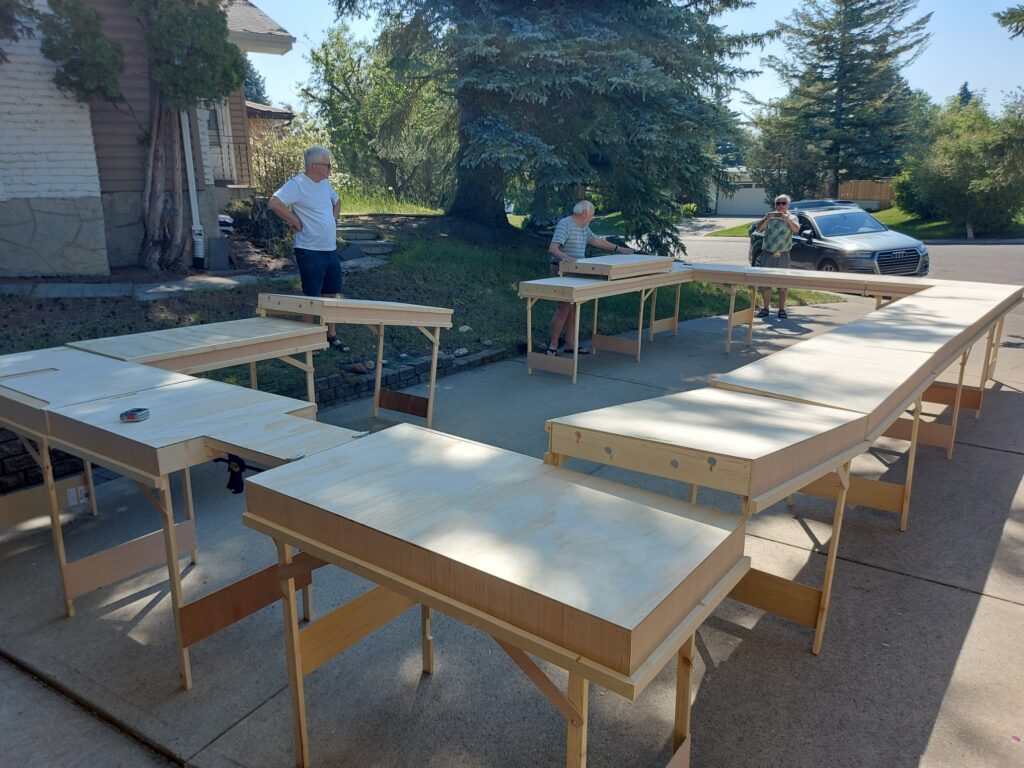
Got all of the boards ‘on legs’, outside and sort of connected. Some issues but looks pretty good to us.
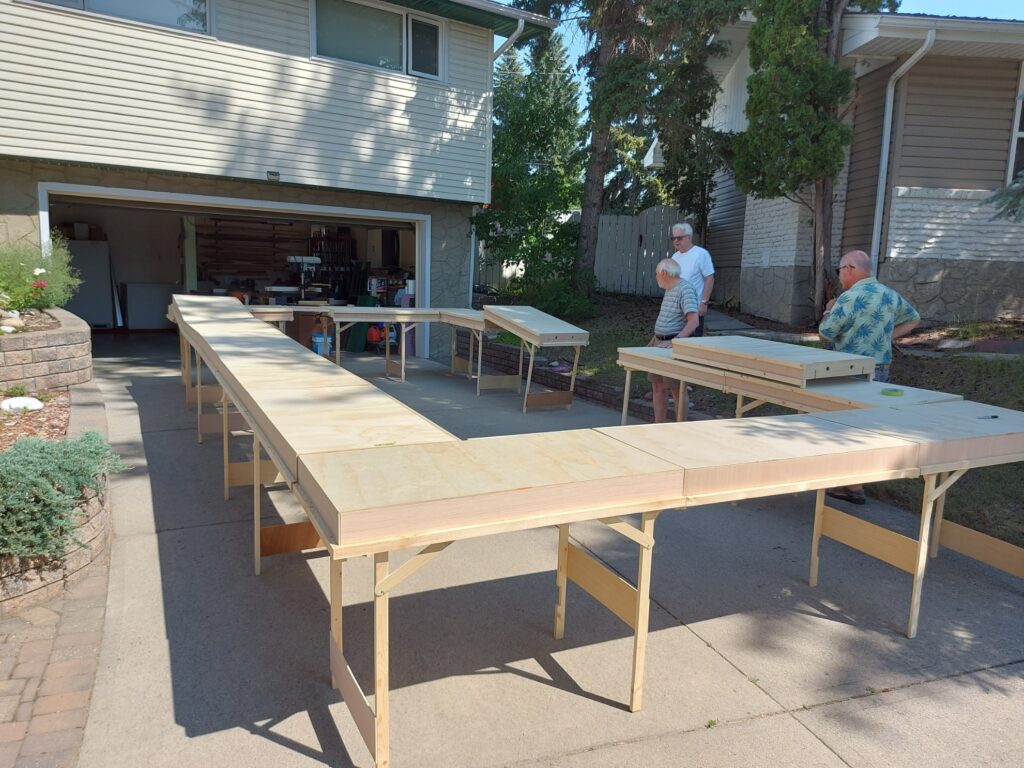
July 24th update: Board construction is under way, 16 boards, 5 different types, Confusion occasionally reigns.
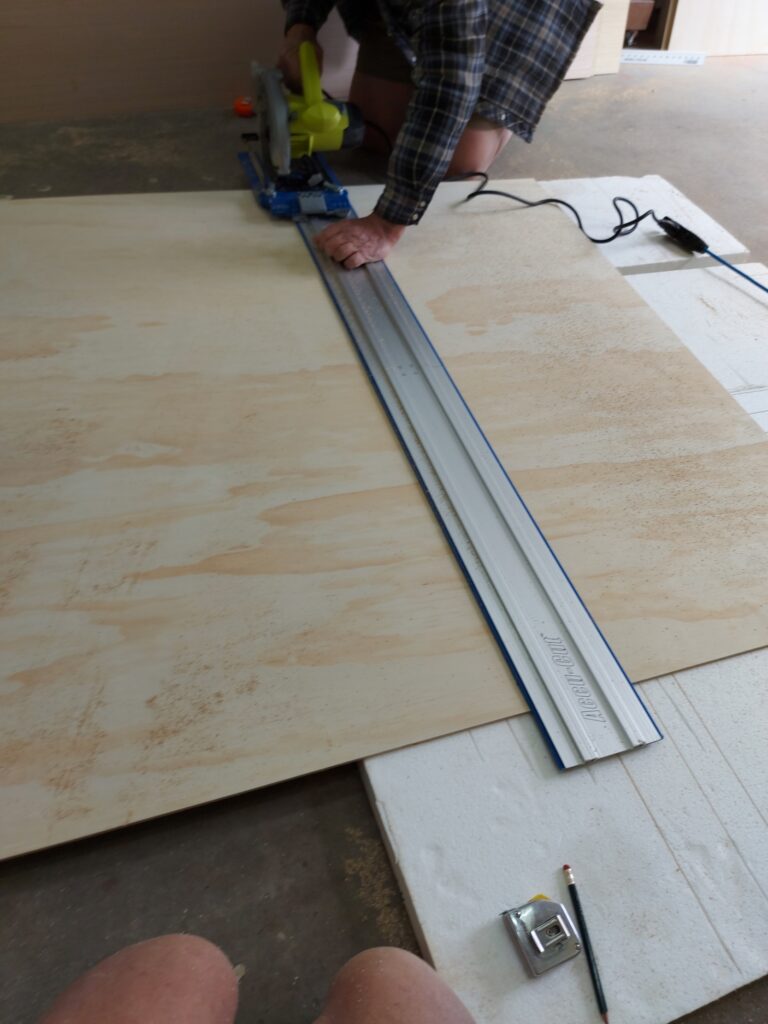

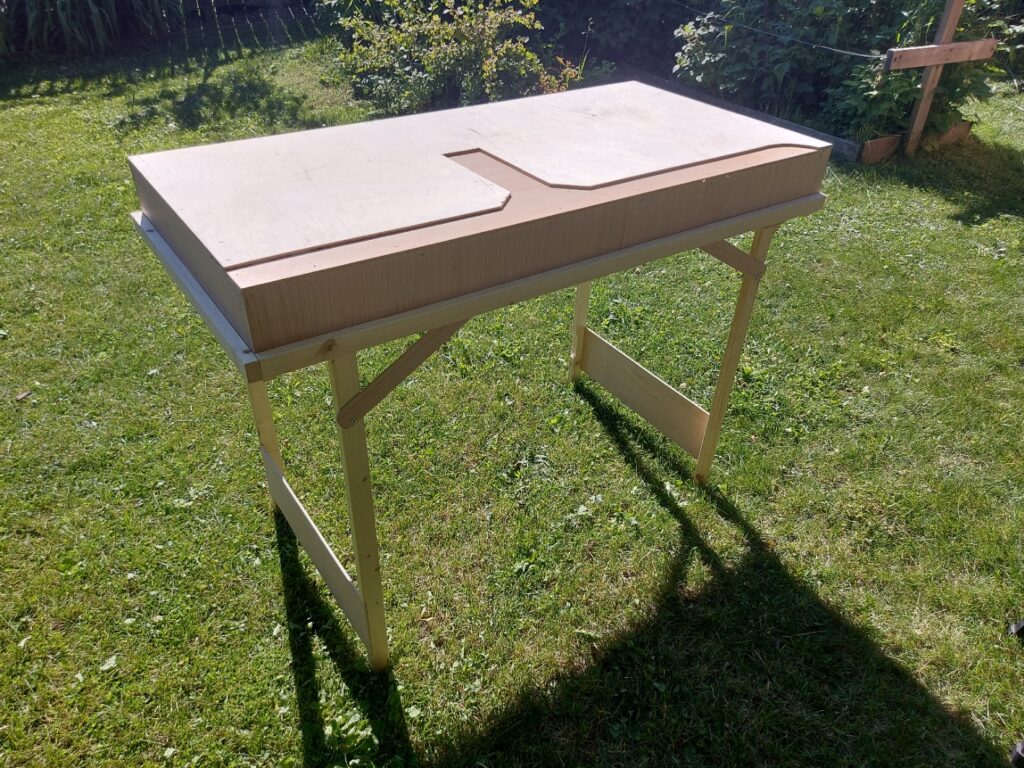
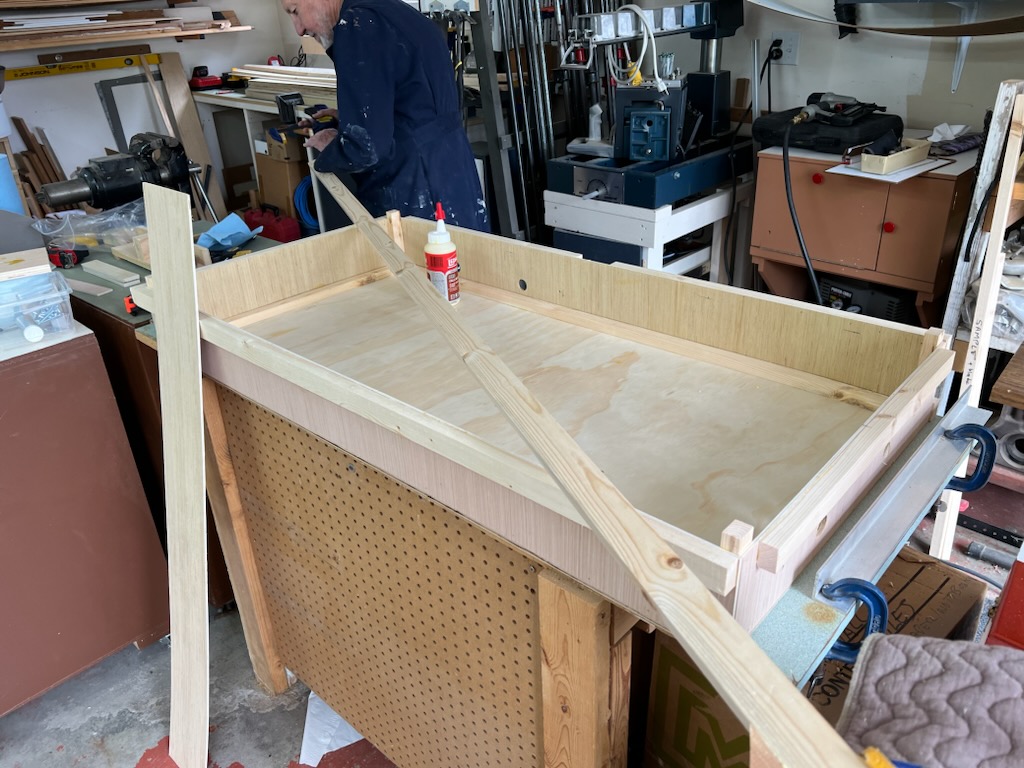
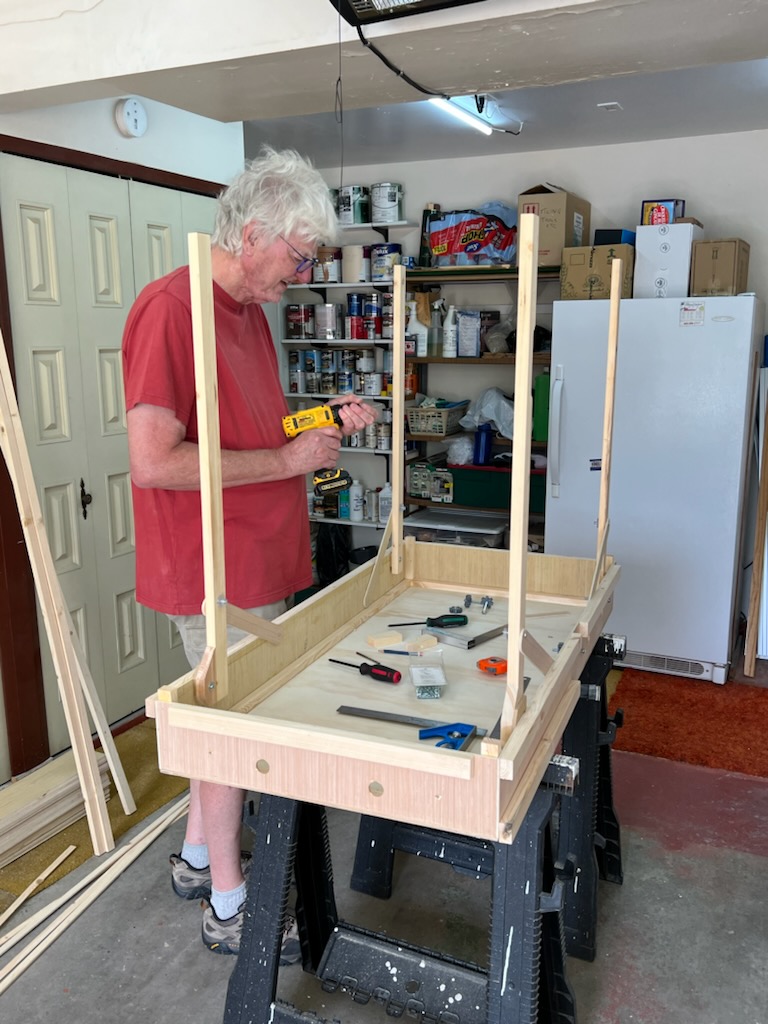
Board construction underway.
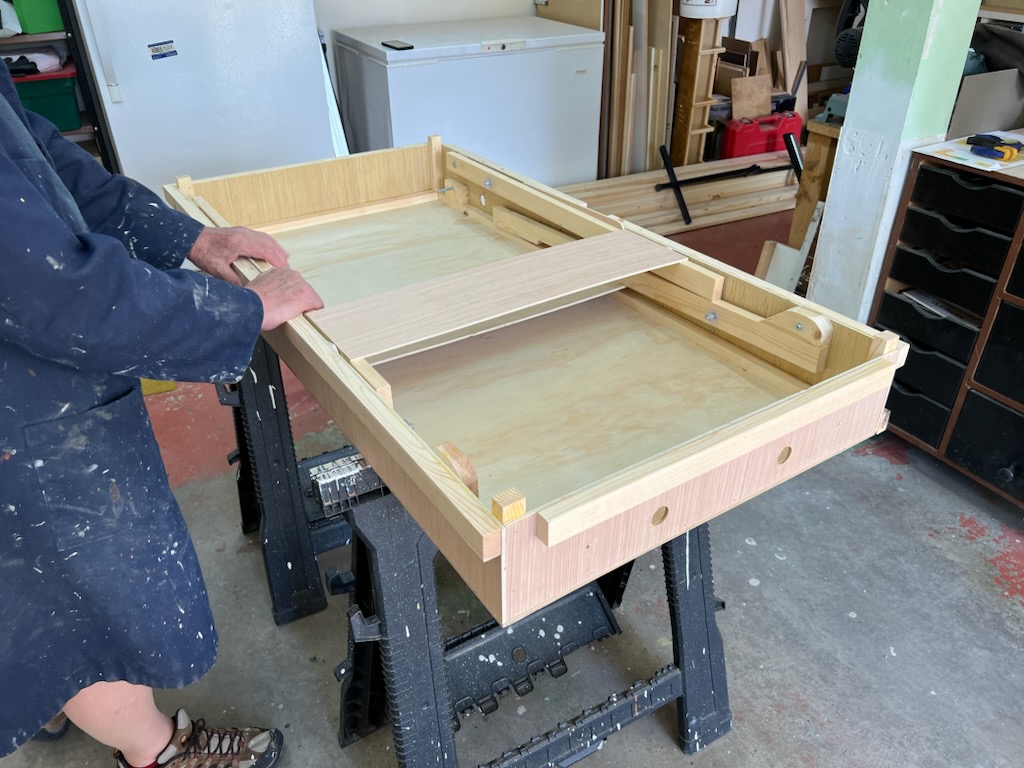

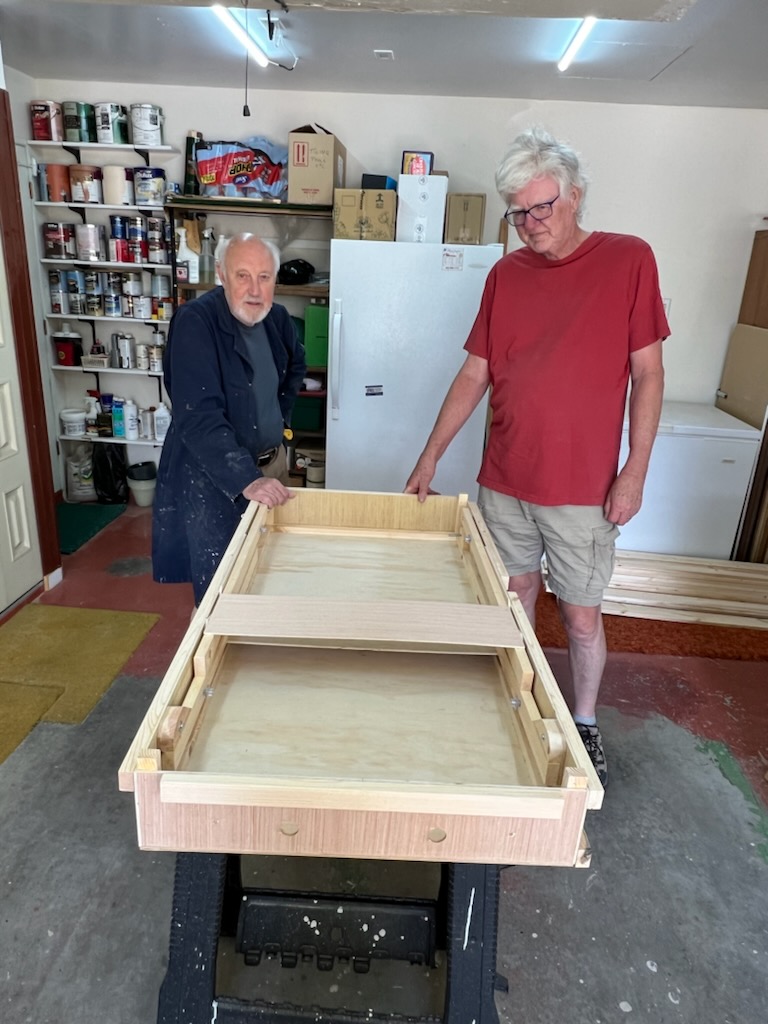
Late July 2024 Size of layout and boards were finalized. Lightweight self contained board plans were approved, and lumber was ordered.
Winter & Spring 2024 Much discussion about the new layout. Multiple elements were needed to be decided: how big to make, board size & construction, number of tracks to run, DC and/or DCC. What kind of track plan: main lines, shunting areas, storage sidings, type of landscape/buildings etc. How to supply track power, how to control the points (British for turnouts), size and make of track, and many more. Things gelled during the summer, with many discussions and meetings.
November 2023 The Club decides that the interim layout known as The Branchline was too problematic for continued use. The decision was taken to build a new Exhibition Layout.
Fall 2023 Following exhibiting ‘The Branchline’ at Supertrain 2023 and Railway Days at Heritage park the club members realized that there were problems with this layout. At an Exibition the public likes watching ing trains running. With an end-tp-end layout it’s too easy to get one end clogged with rolling stock, requiring locos to be removed and put on the other end of the train to run back. Long trains were not possible, nor was the ability to run an normal line speeds.
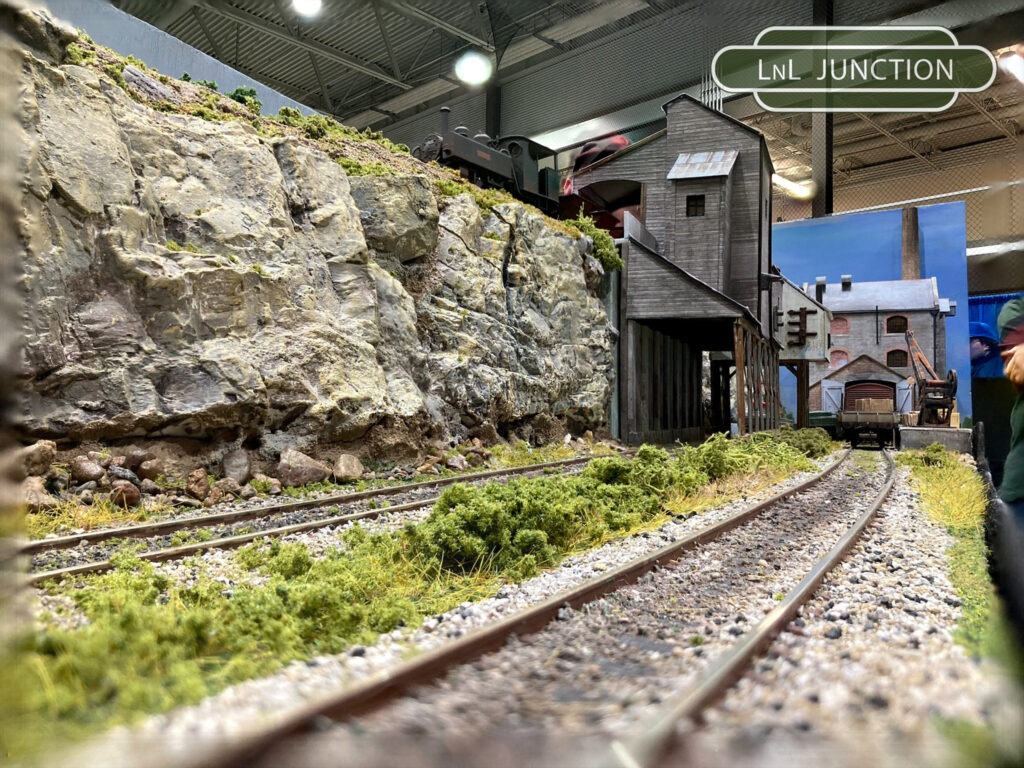
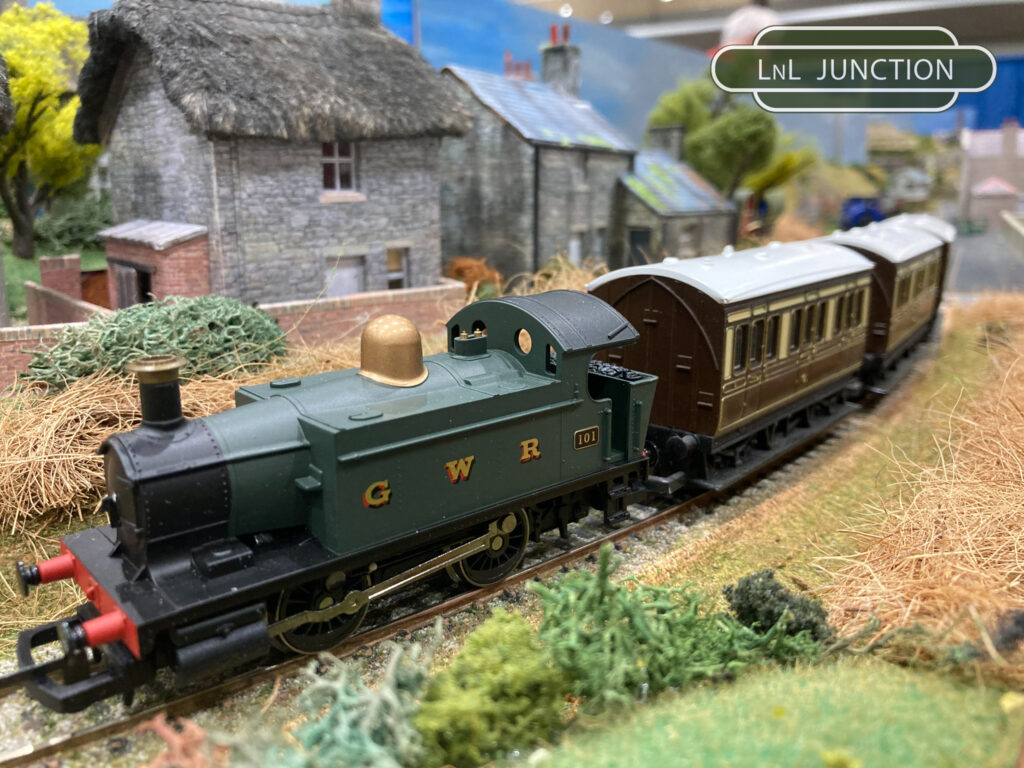
Fall 2023 Following exhibiting ‘The Branchline’ at Supertrain 2023 and Railway Days at Heritage park the club members realized that there were problems with this layout. At an Exibition the public likes watching ing trains running. With an end-tp-end layout it’s too easy to get one end clogged with rolling stock, requiring locos to be removed and put on the other end of the train to run back. Long trains were not possible, nor was the ability to run an normal line speeds.
